Australia
We did a Natural Habitat expedition to Kangaroo Island, Tasmania, and the Ocean Coast Road. Many of my notes are from Nat Hab briefings.
Over 80% of Australia’s mammals, plants, reptiles and frogs can’t be found anywhere else. The geological isolation of the continent for millions of years allowed a unique biodiversity
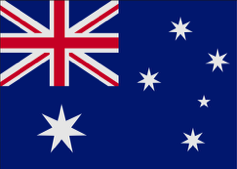
2023
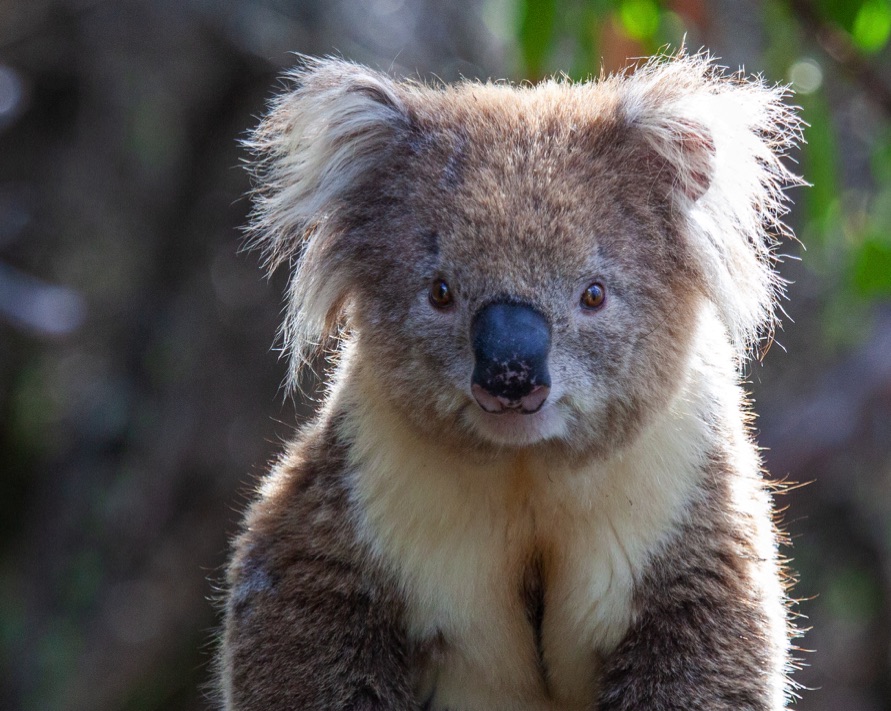
Although frequently referred to as “koala bears,” these cute creatures are not bears at all. They are marsupials.
The kangaroo is the well known marsupial. As with all marsupials, the young are born at a very early stage of development—after a gestation of 31–36 days.
At this stage, only the forelimbs are somewhat developed, to allow the newborn to climb from the cloaca, the birth canal, to the pouch and attach to a teat. In comparison, a human embryo at a similar stage of development would be about a seven week old embryo.
When the joey is born, it is about the size of a lima bean. The joey will usually stay in the pouch for about nine months (180–320 days for the Western Grey) before starting to leave the pouch for small periods of time. Joeys poop and pee and bring dirt into the pouch and that means mother kangaroo has to clean the pouch regularly. She cleans her pouch by putting her long snout into the pouch and licking it out.
When a joey grows to be too big for the pouch, its mother will constrict the entrance, to keep it from expanding, telling the kid, that's it. He can still stick his head in and nurse. It is usually fed by its mother until reaching 18 months.
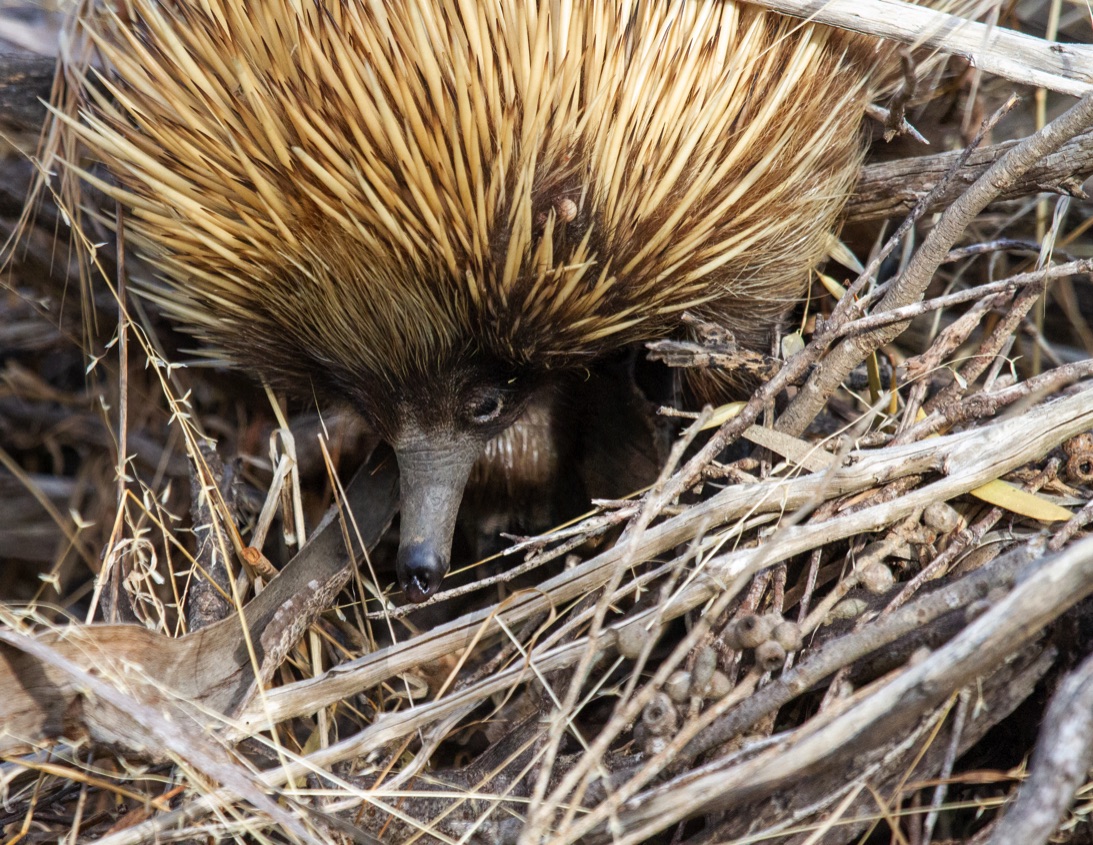
One of the most unusual animals we found was the Echidna. It along with the Platypus are monotremes, which are egg laying mammals and marsupial. The life span in the wild is about 50 years.
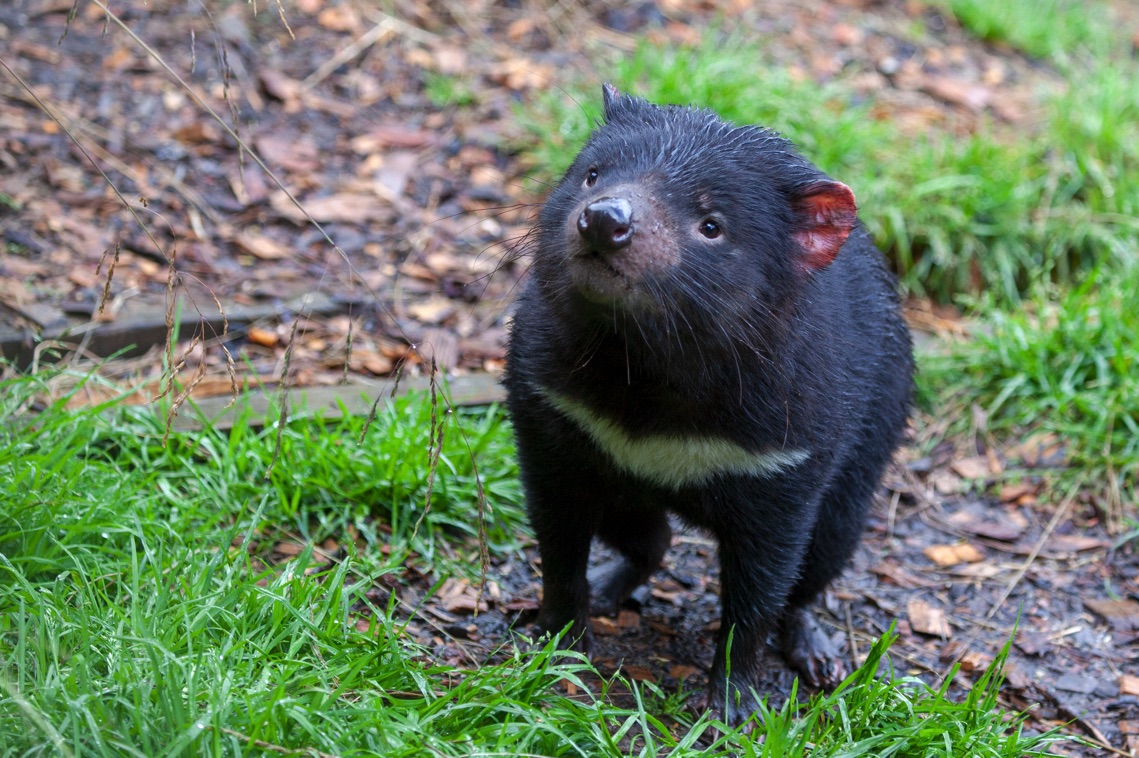
Tasmanian devils are the largest carnivorous marsupials on the planet. They rival the the hynea for the strongest mammalian bite in the world.
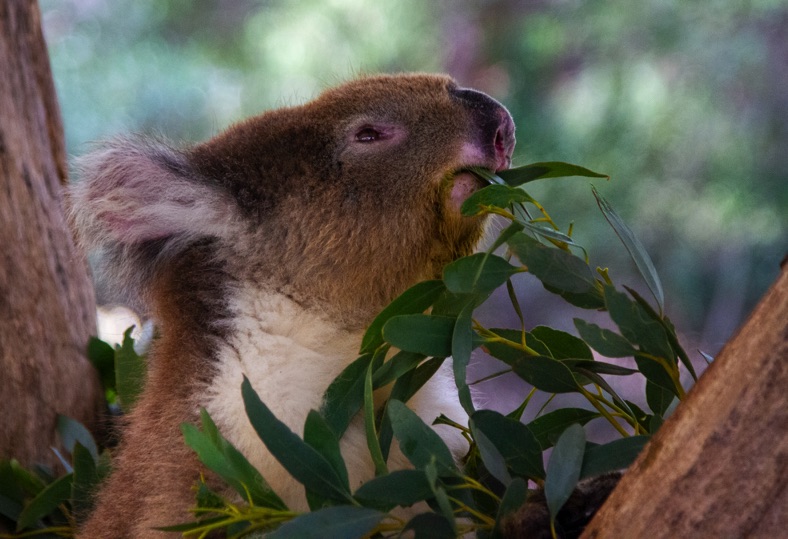
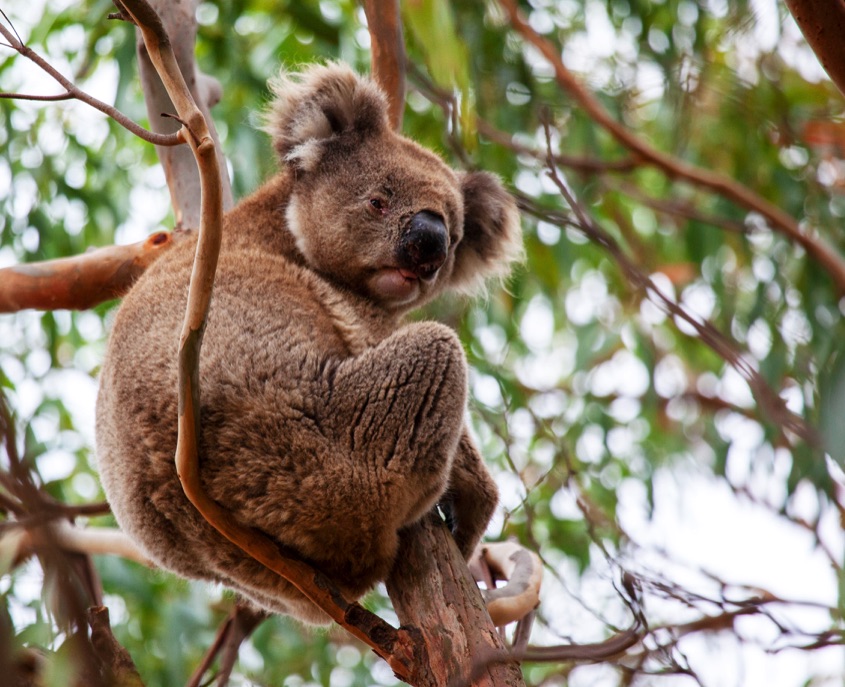
Koalas survive on a diet of eucalyptus leaves and can eat over two pounds a day. They choose their leaves wisely – those at the top of the tallest trees contain more liquid and nutrients.
Eucalyptus leaves are not very nutritious, and they are toxic to most animals.
Their special fibre digesting organ, called a cecum, helps to detoxify the chemicals in the leaves.
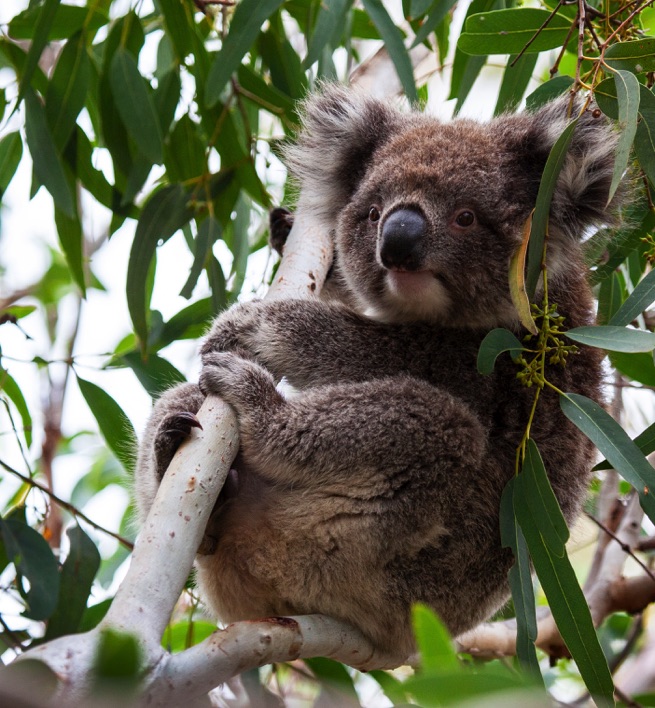
Living in trees and being wedged between rough branches requires a lot of support. The koala has strong cartilage at the end of their curved spine, allowing them to make eucalyptus trees a comfortable home.
Just like us, koalas have fingerprints that are completely unique to each of them. In fact, they’re so similar to human fingerprints that it’s extremely difficult to distinguish between the two species, even under a microscope. Koalas also have thumbs, but unlike us, they have two on each hand.
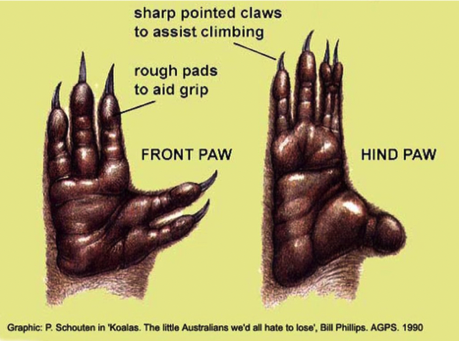
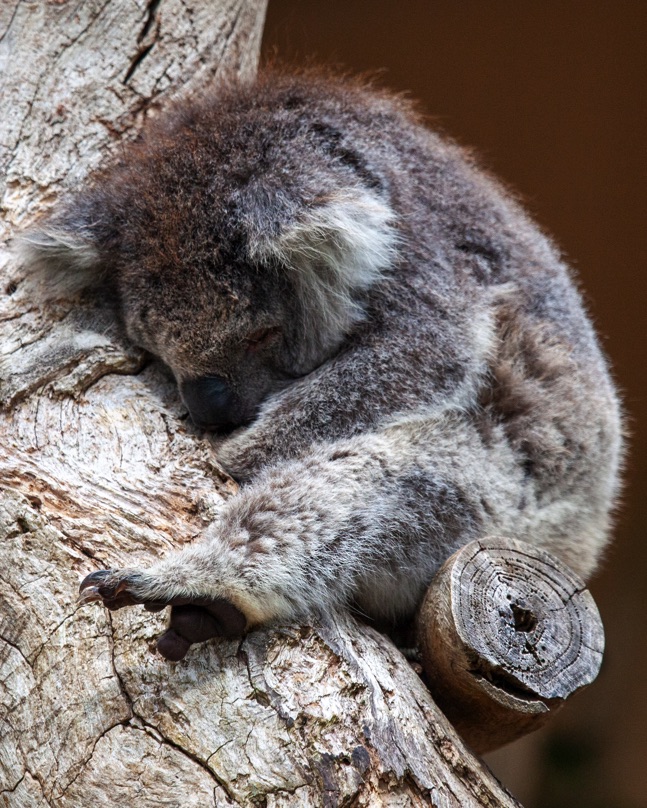
Koalas are nocturnal, and they
sleep for up to 20 hours per day. Rather than being inherently lazy, their low-energy lifestyle is a direct
result of their diet.
Sleeping so many hours per day allows the koala to conserve energy and also gives their bodies time to neutralize the toxins from their food.
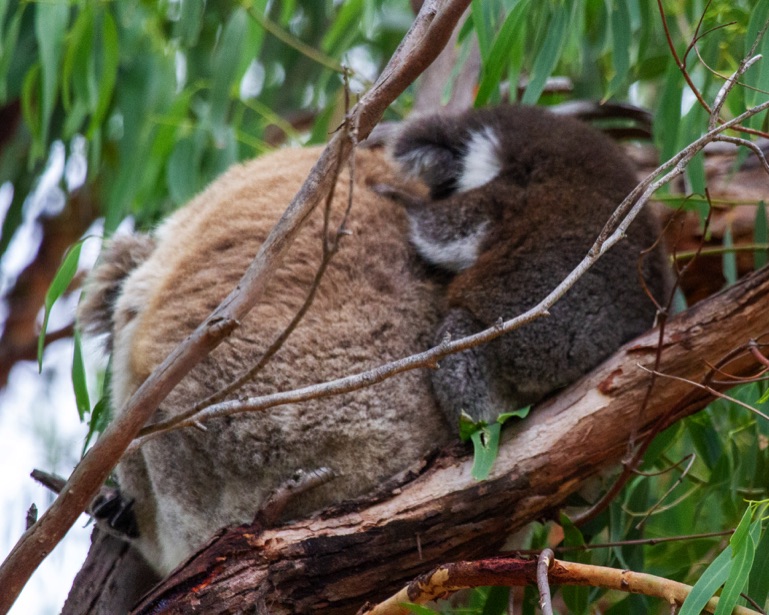
A mother has a single joey after about a 35 day gestation. Sometimes called a pinky, the newborn weighs about 0.02 oz and is less than an inch long. It must climb from the cloaca to the pouch. Blind and earless, a joey uses its strong sense of touch and smell, as well as natural instinct, to find its way.
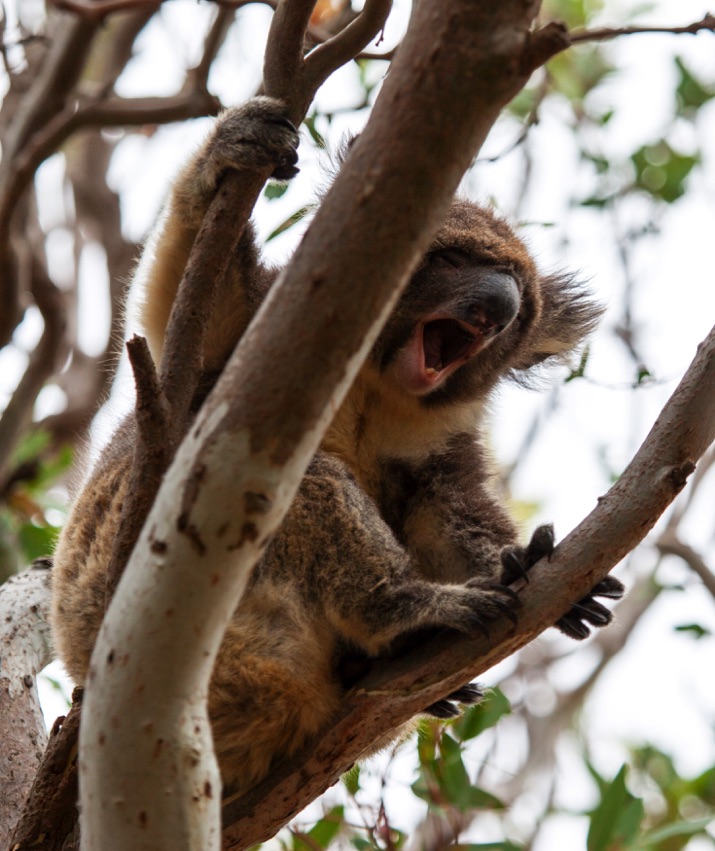
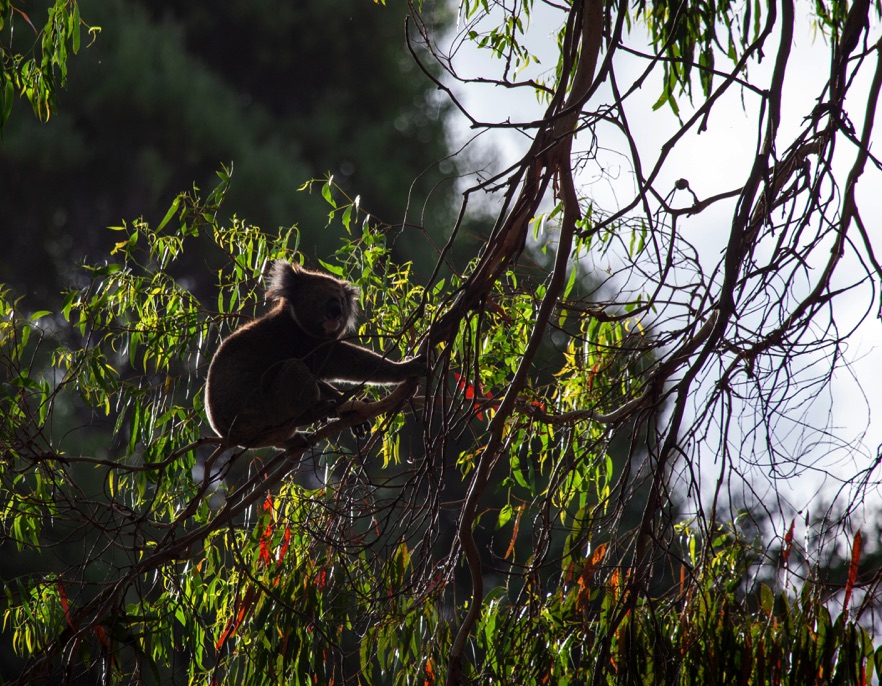
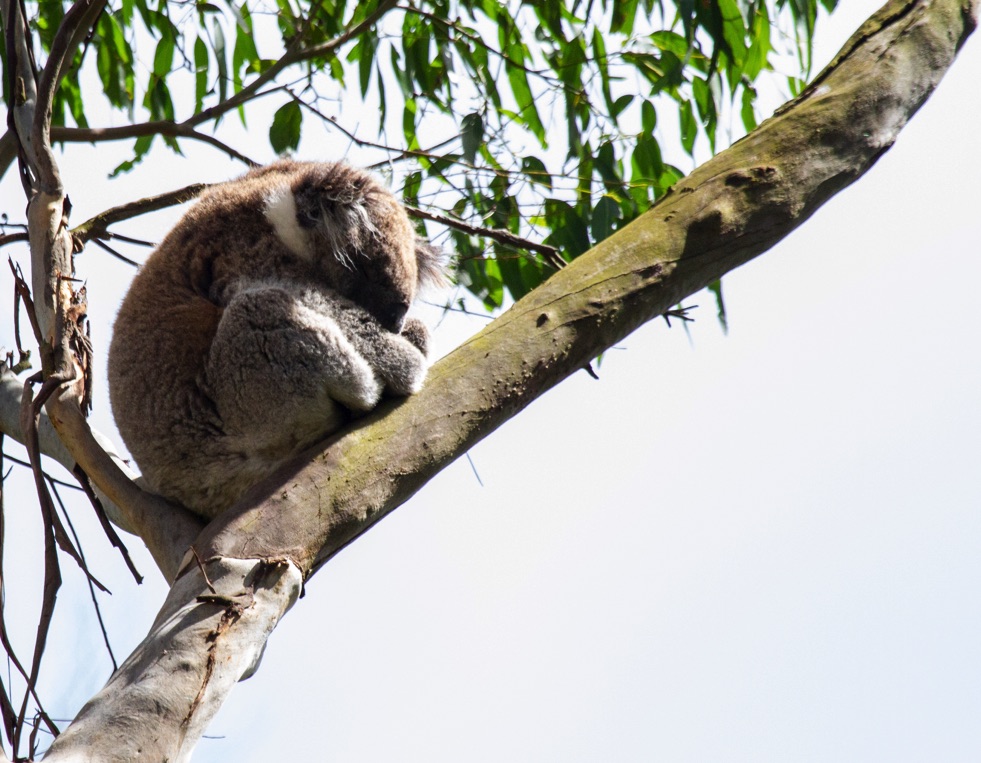
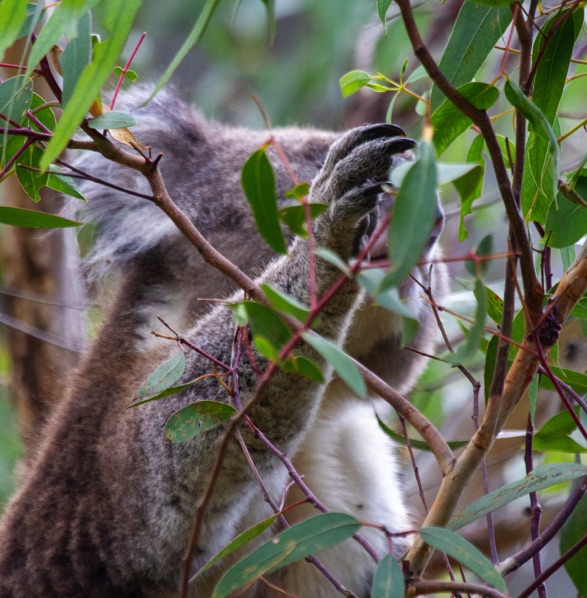
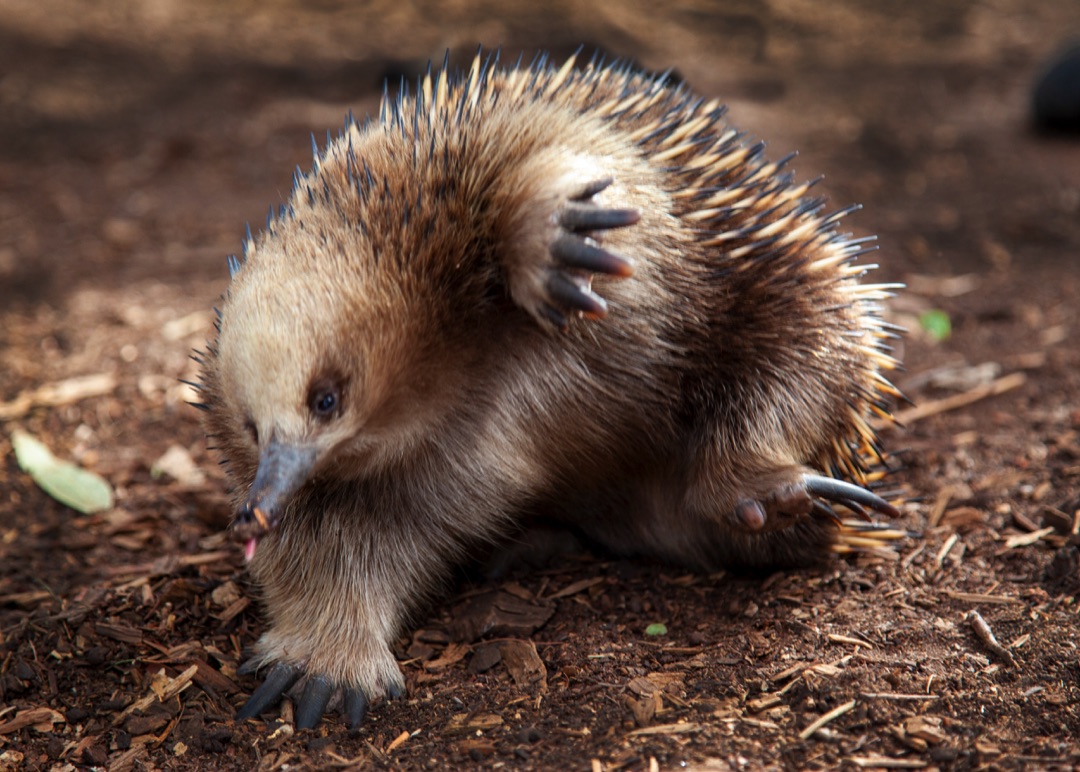
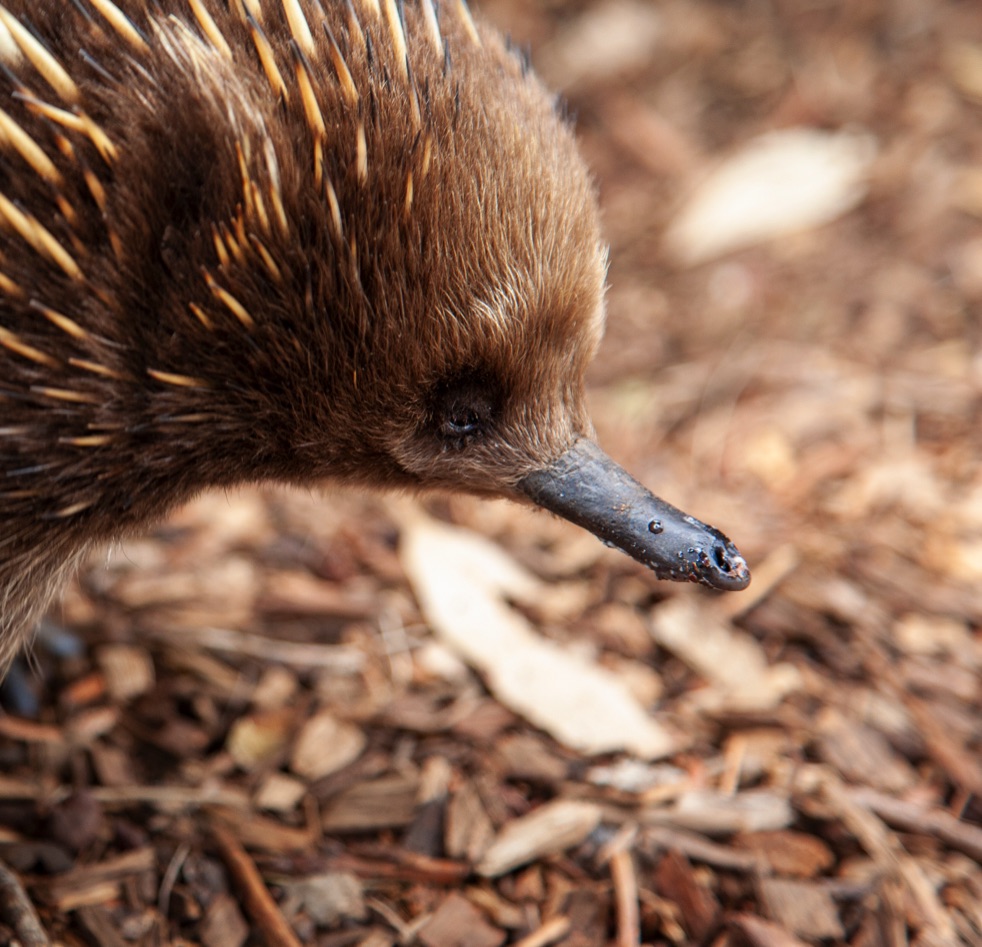
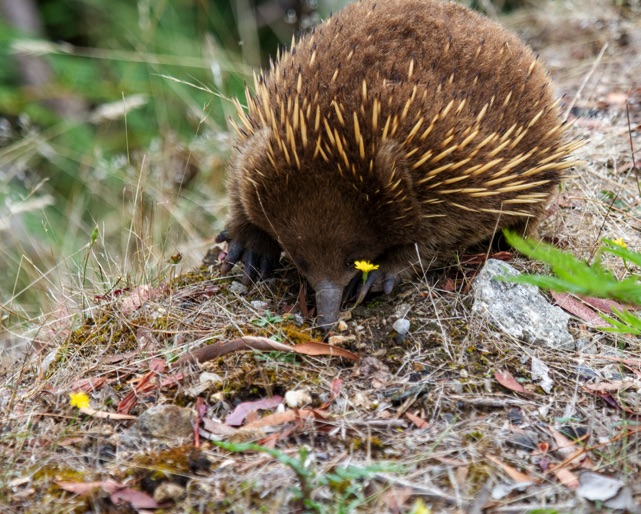
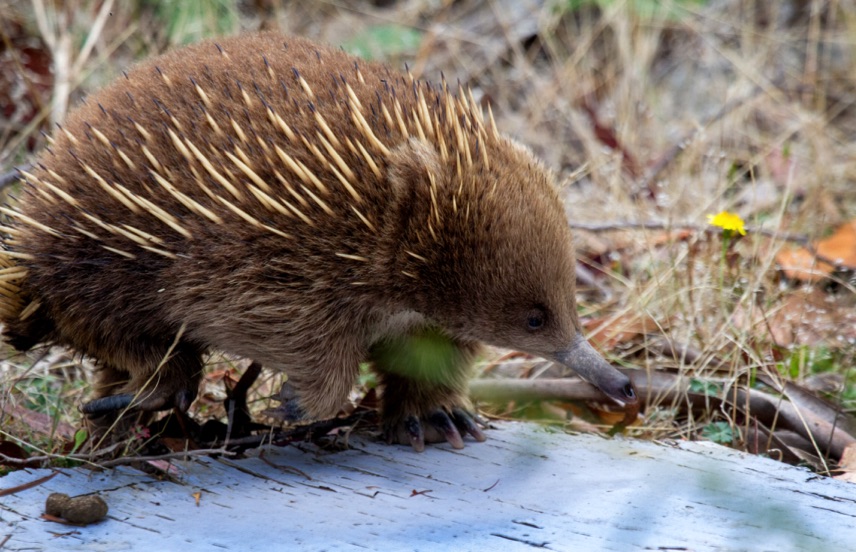
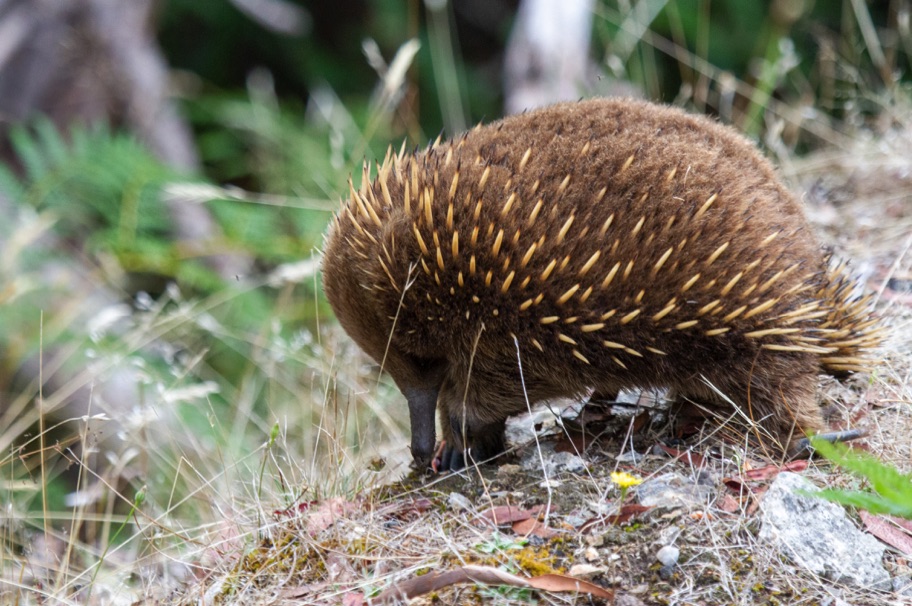
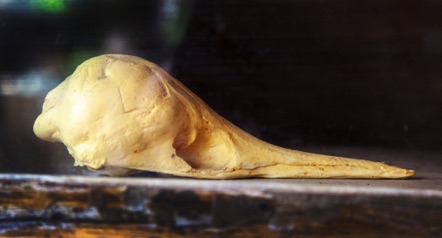
The female lays a single, leathery egg once a year. She rolls the grape-sized egg into her belly pouch and 10 days later, a baby “puggle” hatches. Unlike other mammal mothers, the echidna does not have nipples. Smaller than a jellybean, the puggle uses its tiny, transparent claws to grip the pouch hair and lap up milk secretions from her “patches.
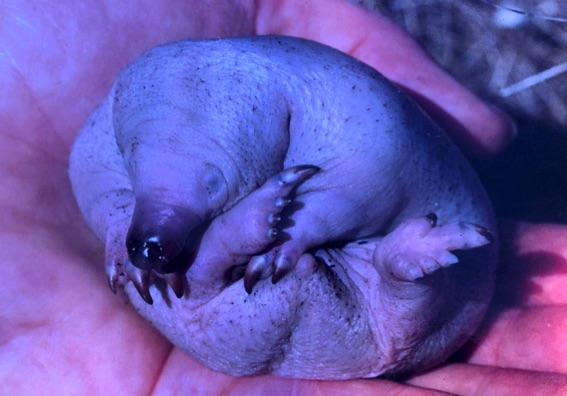
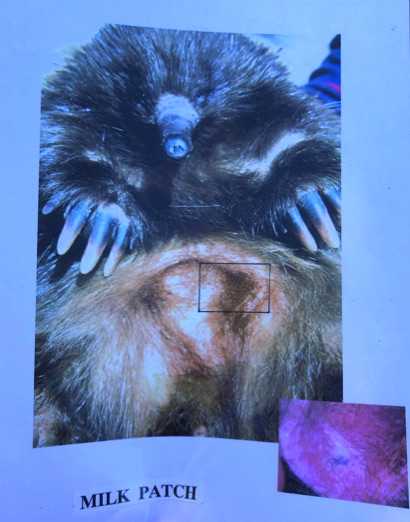
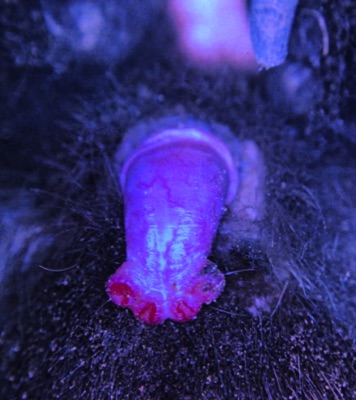
The Echidna’s six-inch “fast tongue” slurps up a variety of insects and larvae. Since they have no teeth, hard pads at the base of the tongue and on the roof of the mouth grind their prey into a paste. The short-beaked is blanketed with dark insulative fur and shielded by beige and black two-inch barbless spines that provide excellent camouflage and defense. With its long claws, the echidna tears through termite mounds and breaks apart hard topsoil to burrow deep underground
The Echicna dig for it's food with it's nose and claws. The nose is not cartilidge but bone for better digging.
The Puggle
At about 53-days-old, when the puggle’s spines emerge, the mother moves the baby into a burrow for seven months, until it can feed for itself.
The echidna is a true animal enigma. Its existence goes back two million years, but genetic studies indicate that the echidna evolved from a
platypus-like ancestor tens of millions of years before that.
Like the platypus, the echidna is equipped with Electroreceptors on its snout—400 for the short-beaked, 2,000 for the long beaked —used to perceive electrical stimuli and detect the movement of prey.
The Short-beaked Echidna
pronounced "e-kid-na"
Echidna penises are also unusual because, unlike those of most other mammals, they are used only for sexual reproduction and not urination.
Instead, echidnas use a cloaca — a multipurpose opening for urinating, defecating and, in females, egg laying. When not in use, echidnas' penises are retracted inside their bodies and emerge through the cloacal opening when erect; their testes, which unusually have no scrotum, remain inside their bodies all the time.
One of the biggest monotreme mysteries is the Echidna penis, which has four separate heads, or glans, at the end of the shaft.
Only two of the heads are used during each erection, and echidnas can alternate between which two they use.
Many Echindna were able to survive the recent fires by burrowing deep into a termite mound
The male Koala has scent glands on his chest that he uses to mark the trees he climbs up.
The devil's pouch opens downward giving a shorter distance from cloaca for the newborn to travel. After a gestation period of about 3 weeks, the mother gives birth to sometimes 20 to 30 joeys the size of a grain of rice. They must race from the vagina through the fir up into the pouch. Unfortunately there are only 4 teats, so sometimes only that number survives. The teat swells as the newborn latches on and prevents him from falling out of the pouch. The mom can also contract the pouch to keep the joeys in. They will usually remain in the pouch for about 5 months.
Perhaps TMI on the Echidna:
Marsupials of Australia include the Koala, Echidna, Kangaroo, Tasmanian Devil, Bandicoot, Wombat, Wallaby, Potoroo, Pademelon, Quokka, and Possom.
All together, Australia has approximately 200 species of marsupials
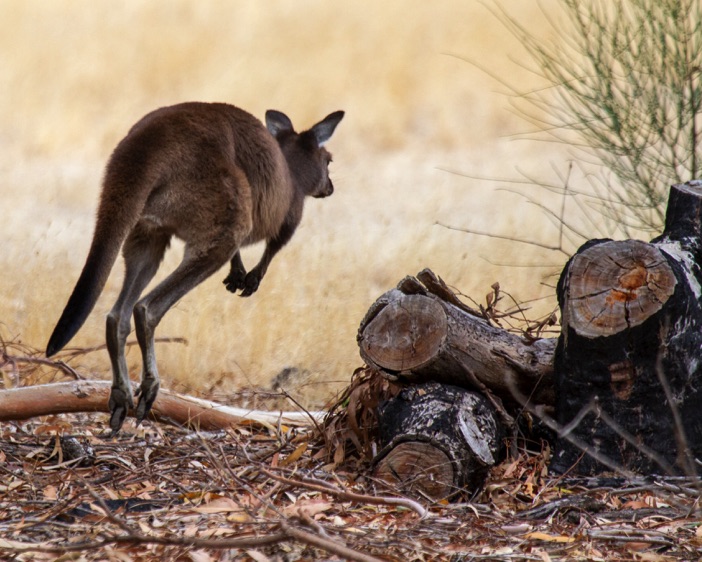
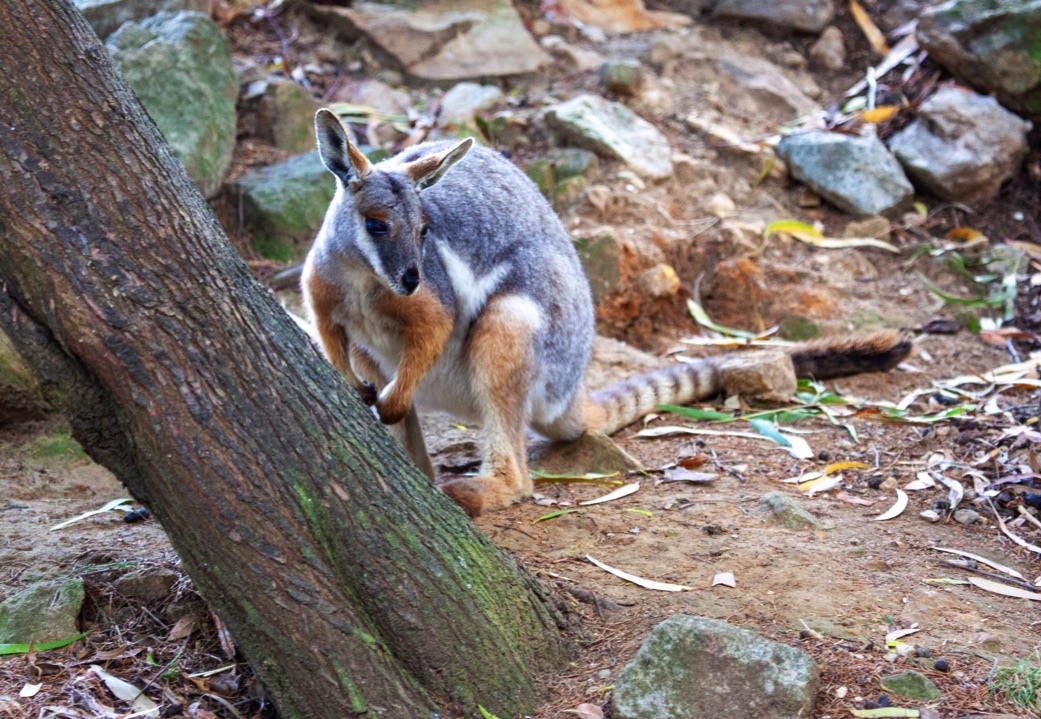
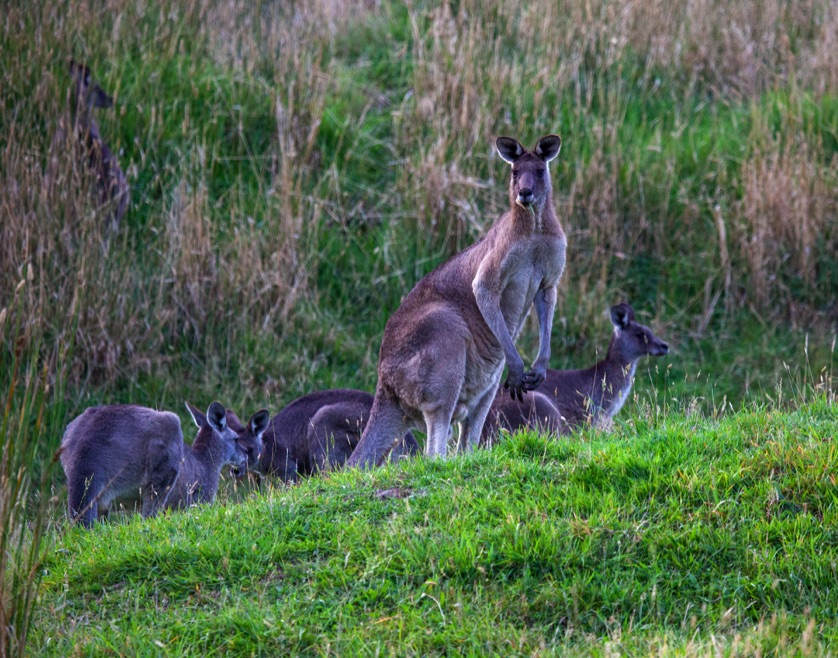
Macropods Macropodidae, and are distinguished according to size. The largest species in the family are called "kangaroos" and the smallest are generally called "wallabies". The term "wallaroos" refers to species of an intermediate size
Stripe tailed Rock Wallaby or the Yellow-footed Rock Wallaby
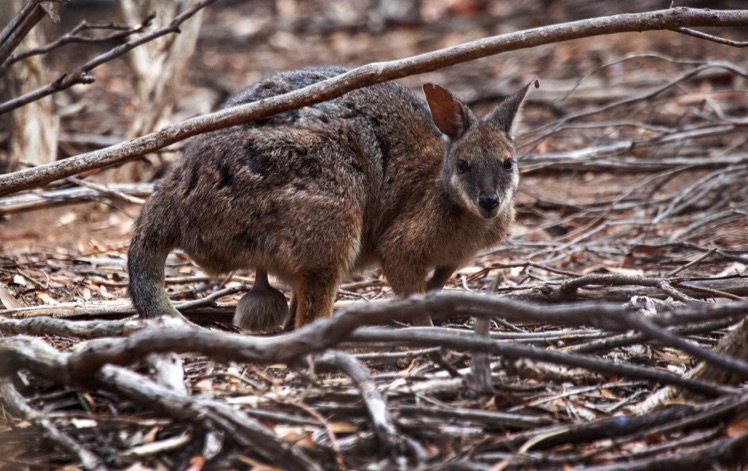
Kangaroos survived in greater numbers because of mobility and speed.
The slower animals like Koalas, Echidnas, Wombats or Devils did the worst.
The fire crossed the 60 mile wide island of Tasmania in 4 hours.
From September 2019 until March 2020, when the final fire was extinguished, Australia had one of the worst bushfire seasons in its recorded history.
In total, 143 million mammals, 2.46 billion reptiles, 180 million birds, and 51 million frogs were harmed.
The scrotum of this male wallaby hangs low, but retracts with jumping
Kangaroos might greet with nose touching.
A group of ‘Roos is called a mob, troop or court.
A large kangaroo can hop 25 feet with each leap.
They are the only large animal that moves by hopping.
They can't move backwards because of the large tail.

The Potoroo is one of the smallest marsupials, a suborder of the Kangaroo and Wallaby families.
Kangaroos have large, powerful hind legs, large feet adapted for leaping, a long muscular tail for balance
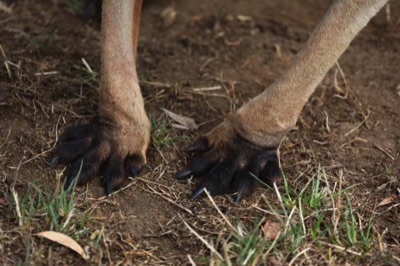
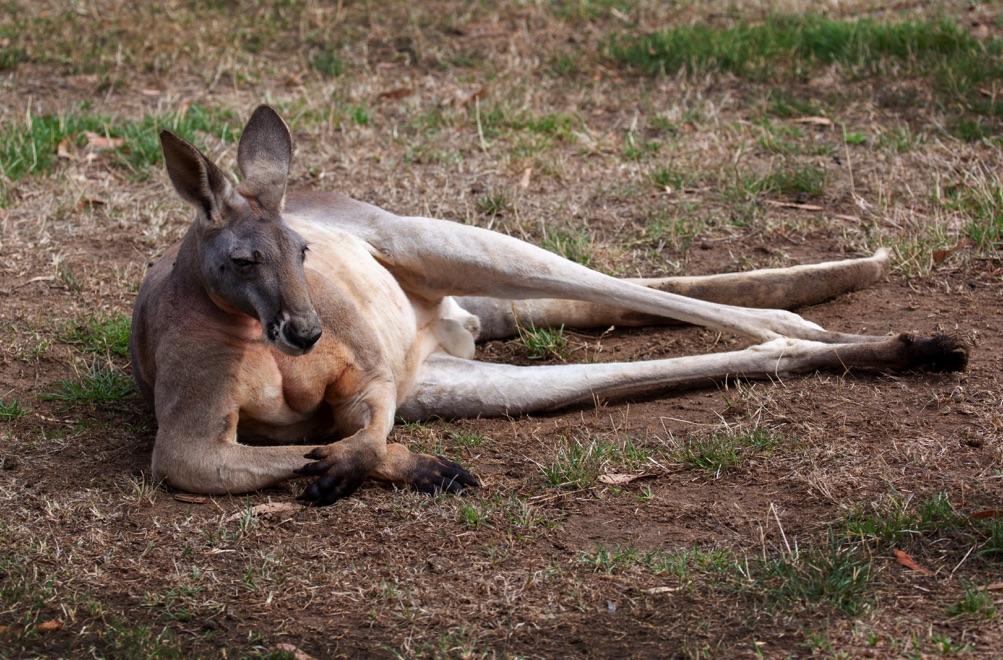
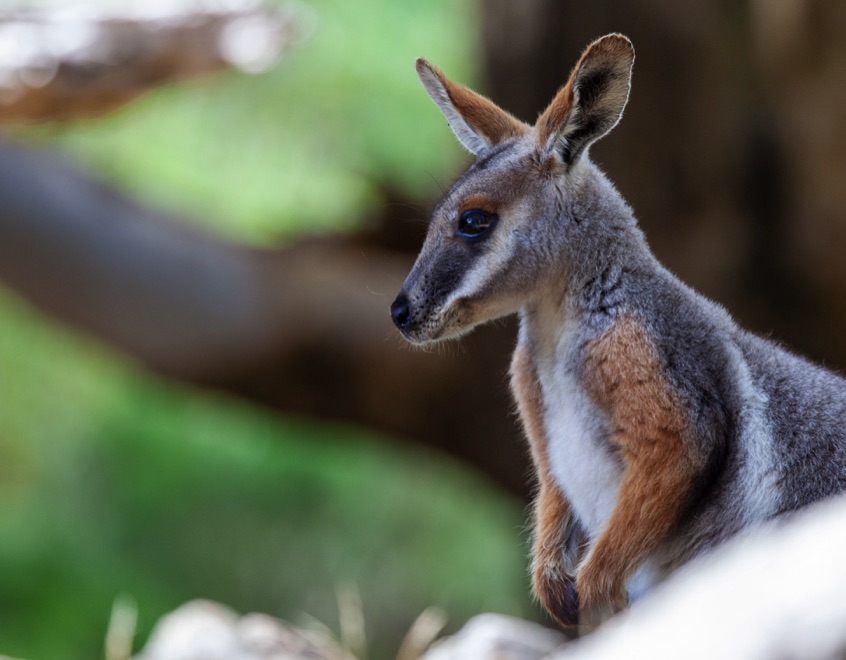
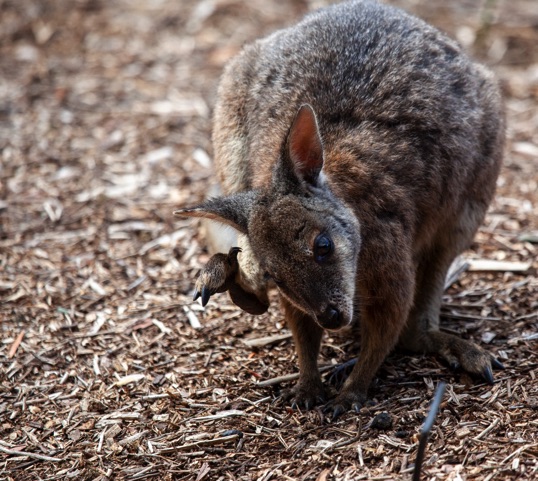
Pademelon
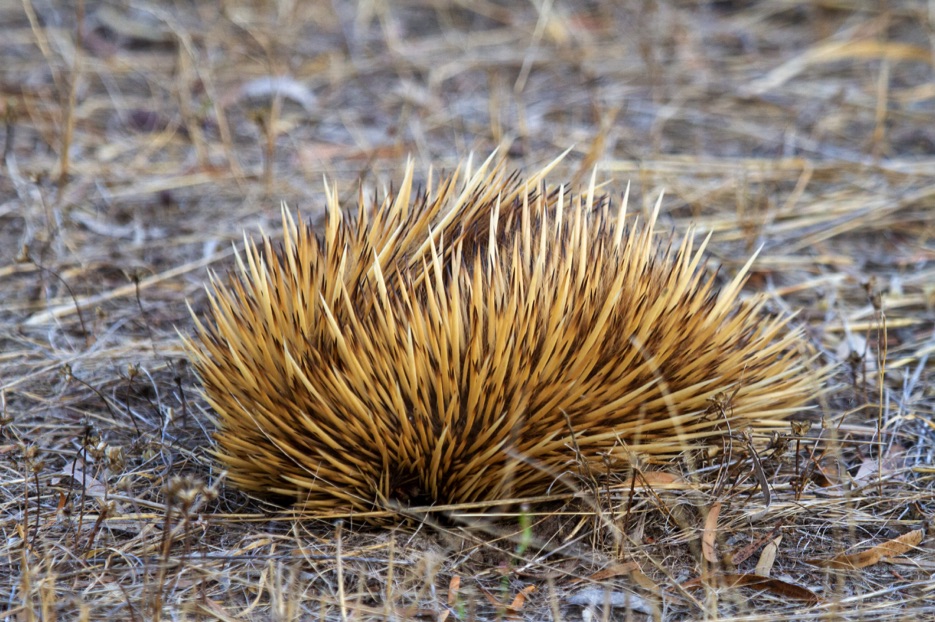
Echidna in the defensive mode. They have spines and coarse hair. The spines are modified hairs made of keratin, the same protein found in claws, nails, and horn sheaths.
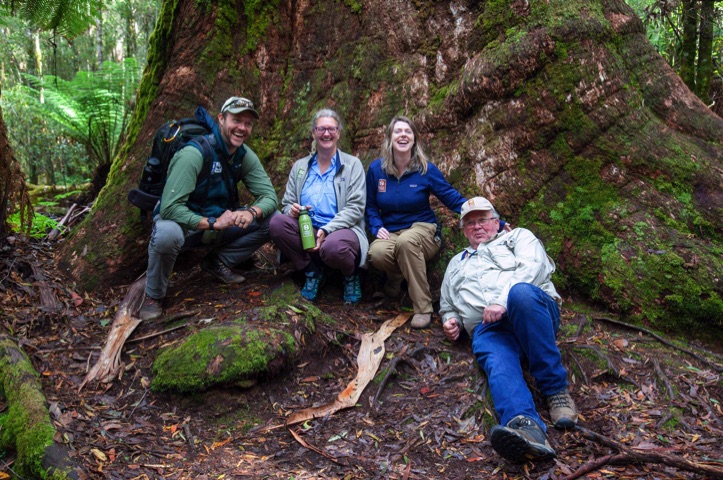
Matt, Silvie, Nikkie, & Jeff
Our Nat Hab crew in Tasmania.
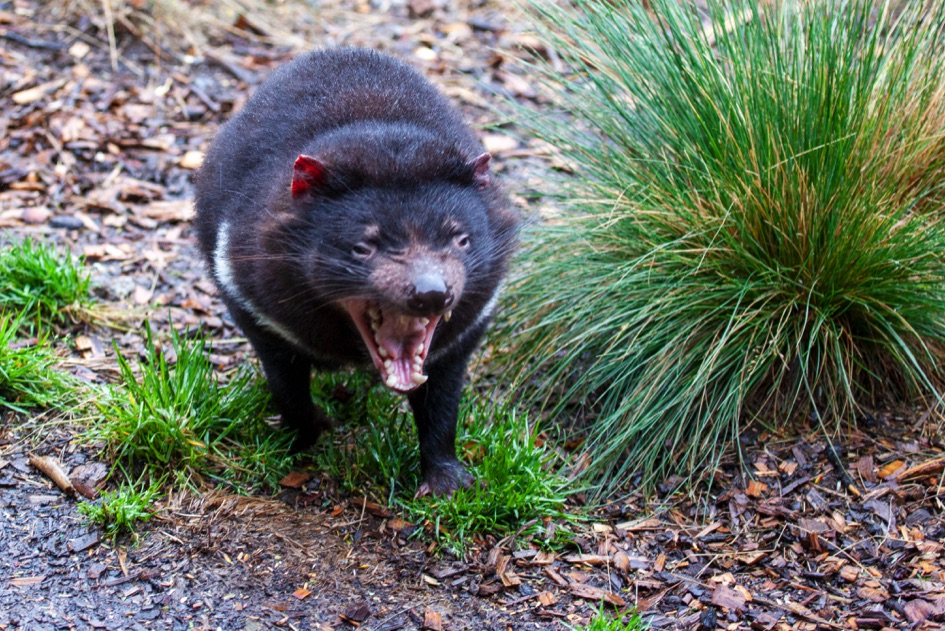
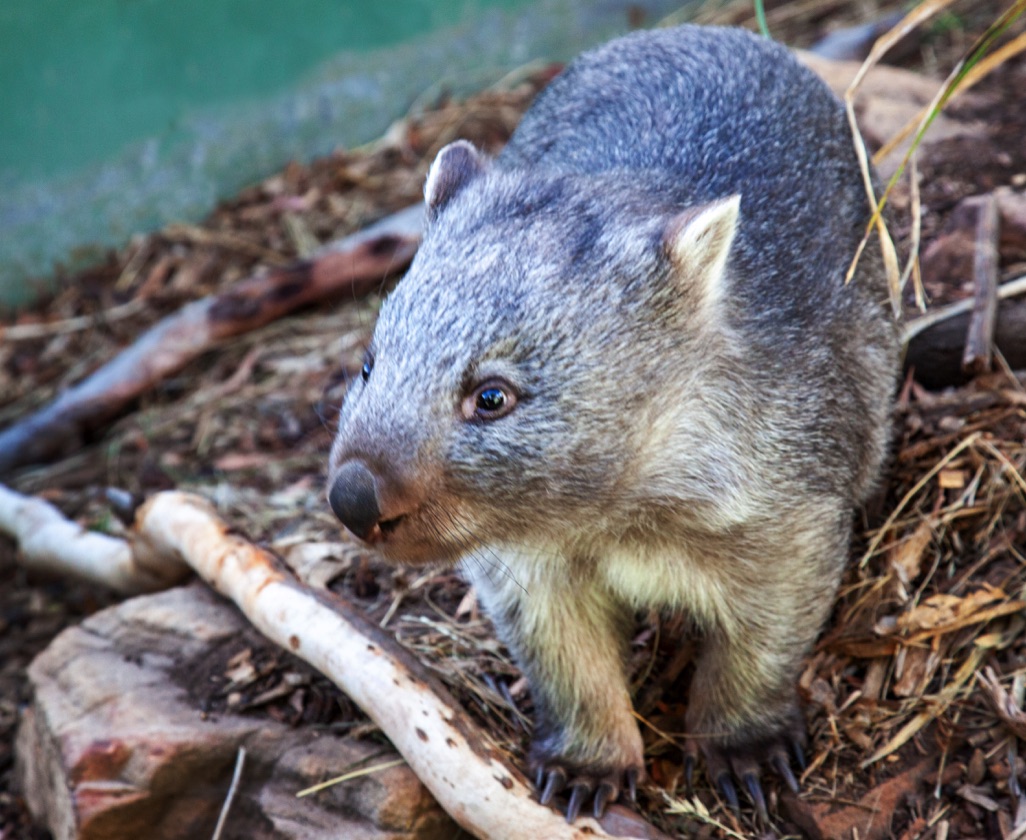
With long, thick claws, these expert diggers create
interconnecting tunnels that can be 100 feet long and 11.5 feet deep, constructed with designated sleeping chambers and several entrances and exits. Like the Devil, the wombats have a rear facing pouch preventing dirt from entering when digging. During bushfires, the tunnels stay cool, offering wombats and other species, such as wallabies, rabbits, foxes and lizards protection from the flames.
The Wombat
Despite their teddy-bear exterior, wombats are known to be aggressive when threatened; a rampaging wombat can sustain a speed of 25 mph for 90 seconds. Wombats also mark their territory with droppings; their intestinal walls shape their poop into angular cubes, perhaps so they don't roll away from the marked spot or latrine.
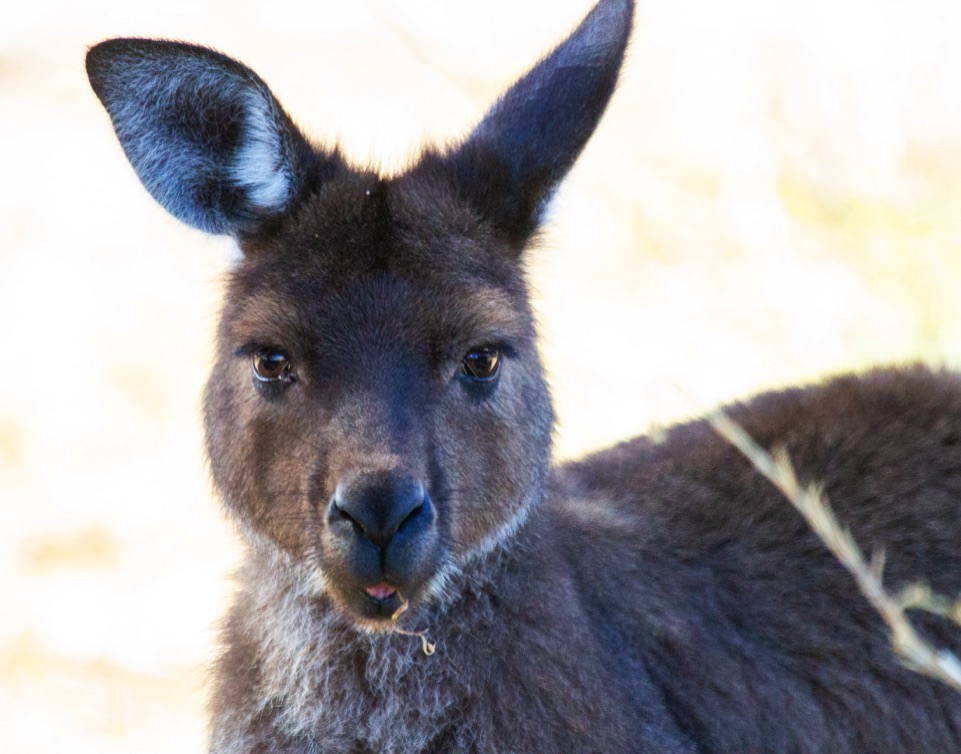
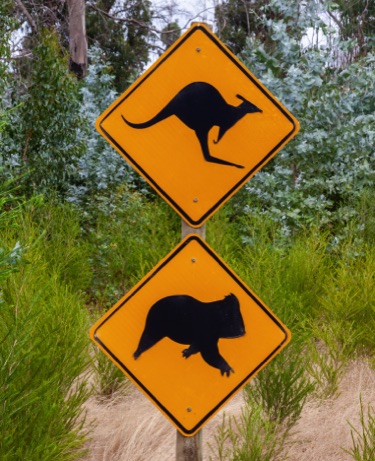
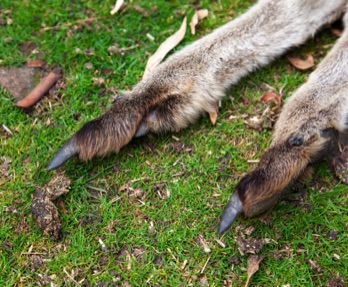
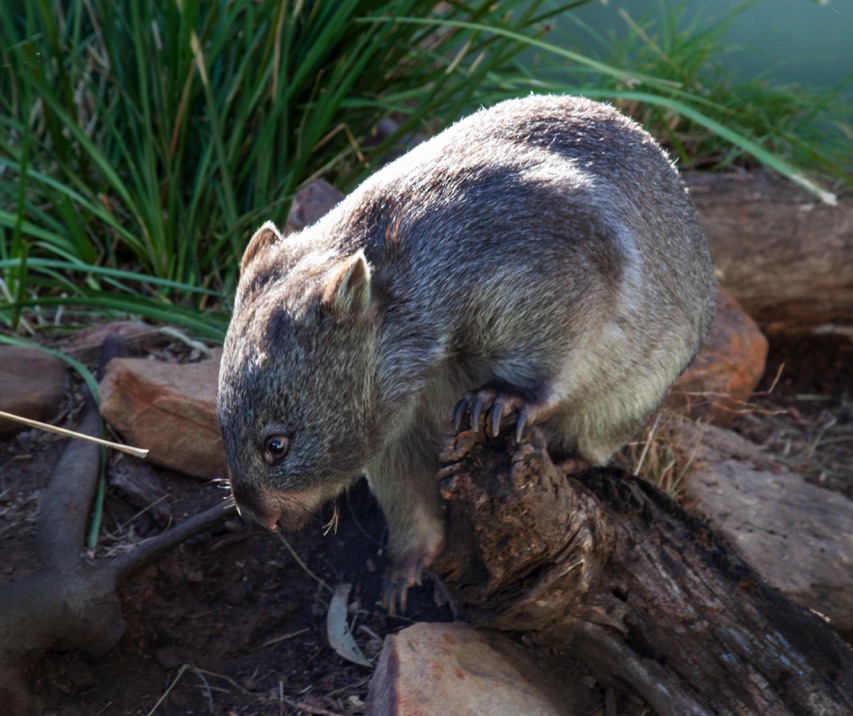
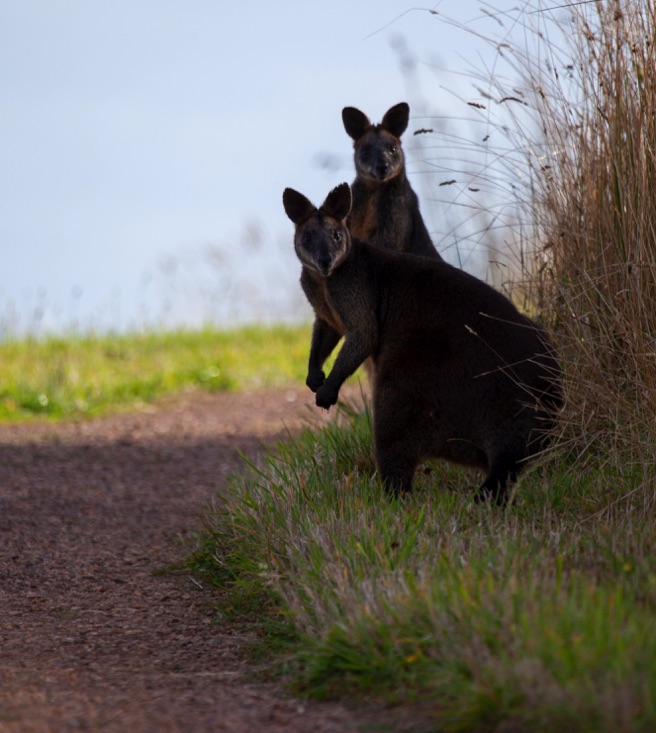
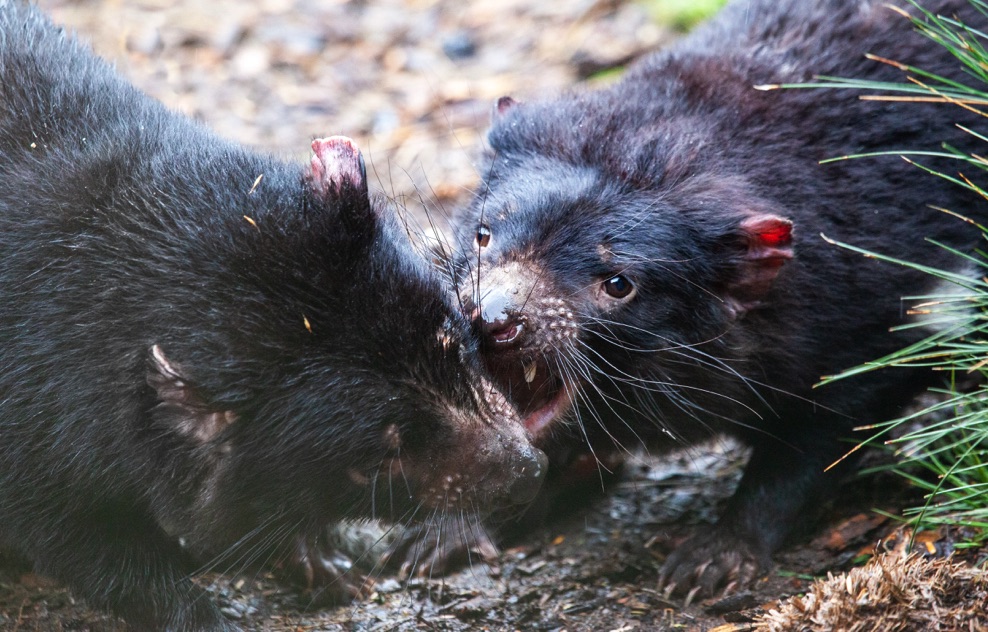
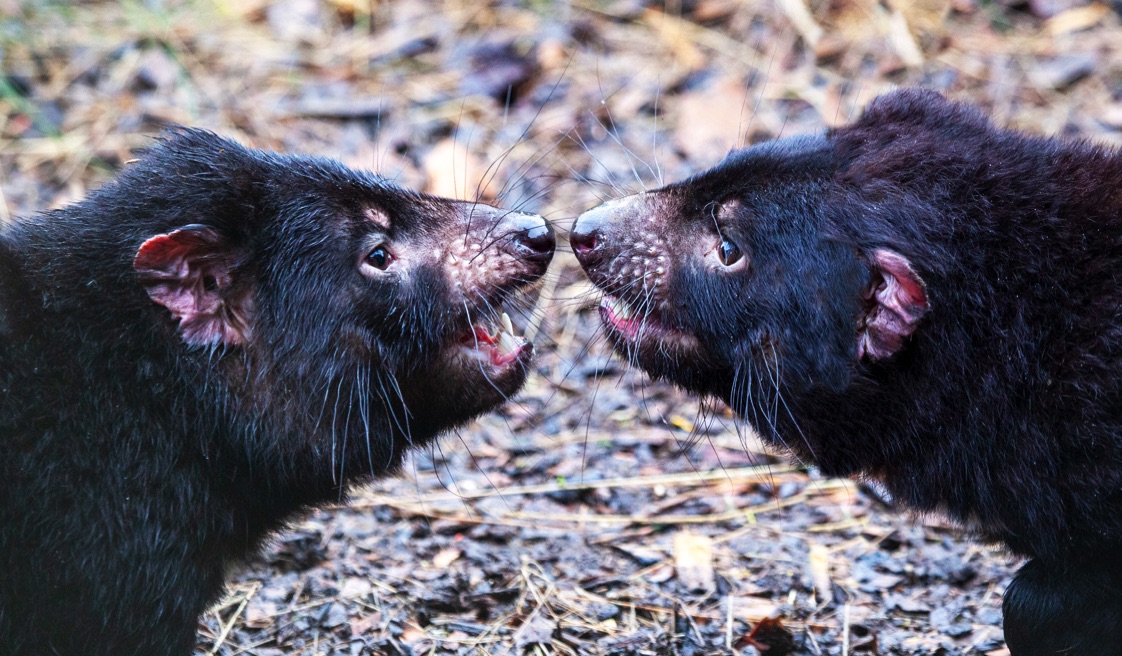
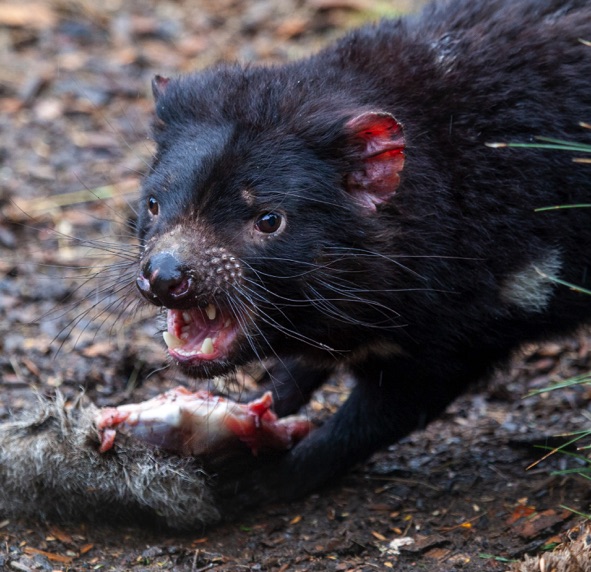
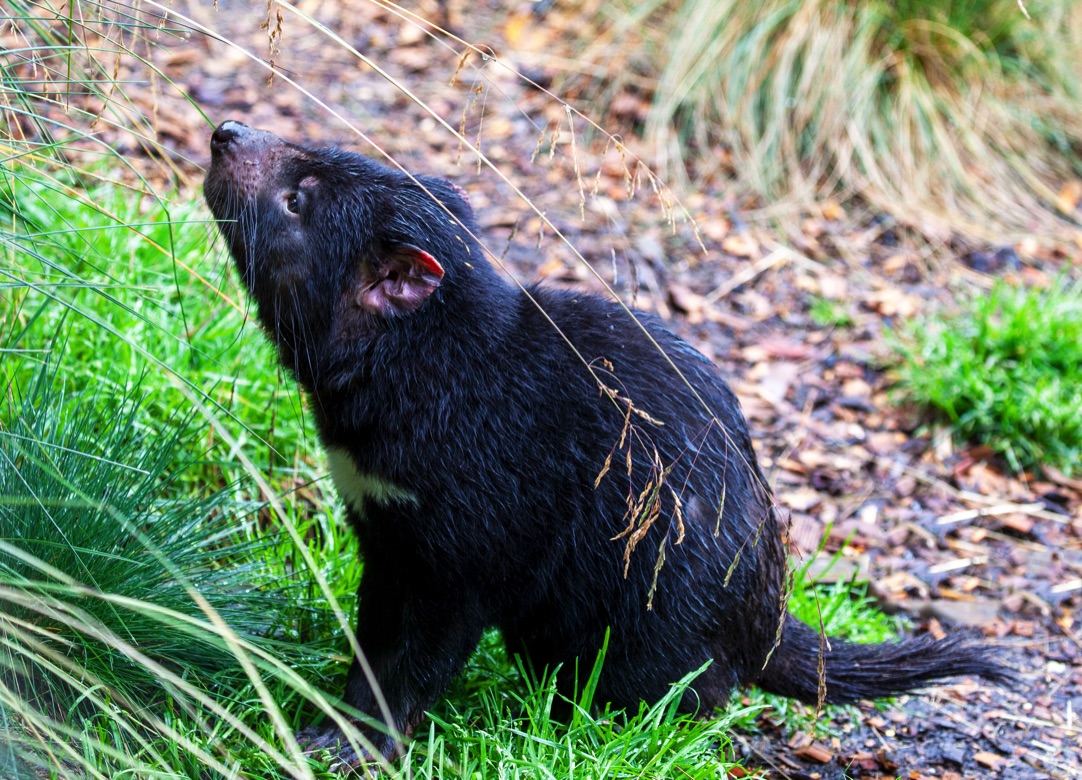
The Island of Tasmania is a good place to find the endangered Tasminian Devil.
It got its devil name from the incredibly loud shrieks and growls it makes at night.
They only eat meat, wombats being a favorite, but also birds snakes, small kangaroos and often carrion.
Koalas do not drink very much water; instead, they get moisture from the leaves of the eucalyptus.
“Koala” means “no water” in one Australian tribe’s language
After weaning, the joey emerges completely from the pouch and clings to the mother’s back until it is nearly a year old.
A koala can can weigh up to 30 pounds and live to about 15 years of age in the wild,
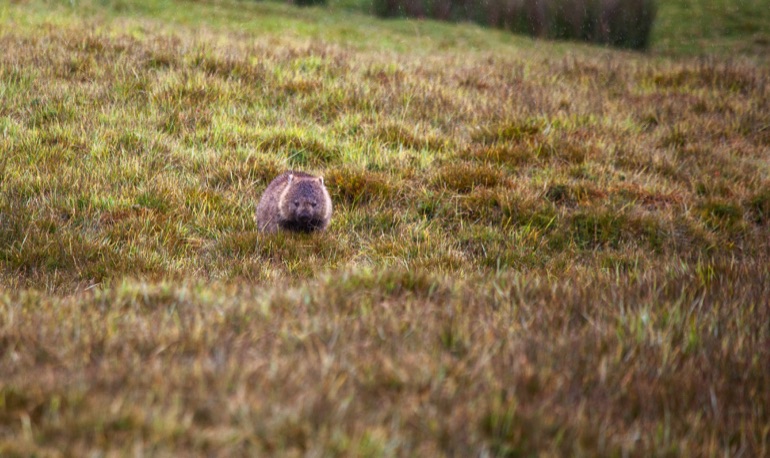
Wombats are solitary, nocturnal , herbivores.
They may spend up to 8 hours a night feeding on grasses.
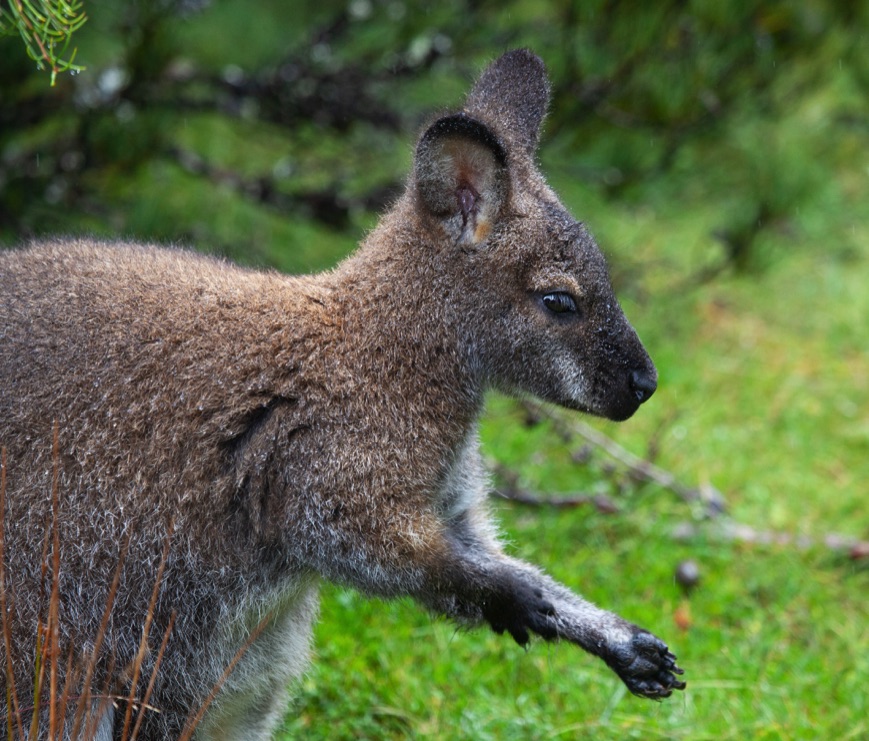
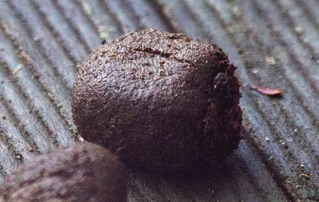
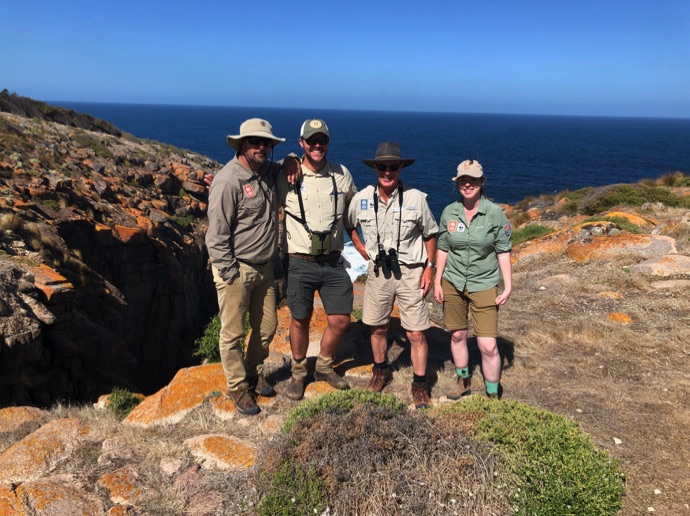
Michael, Matt, Drew & Nikkie
Our Nat Hab crew on Kangaroo Island
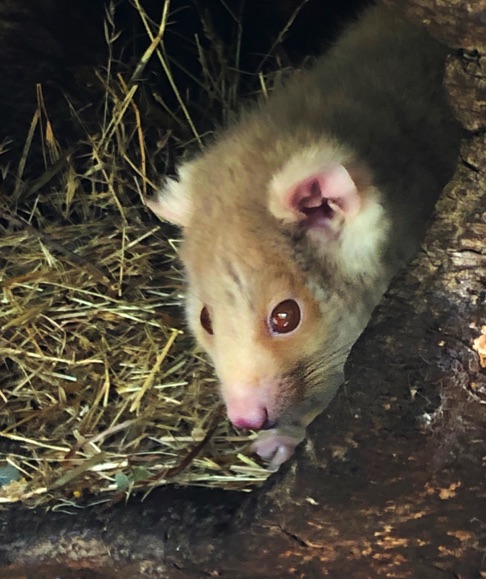
Bushtailed Possum
Brushtails provide a valuable ecosystem service to native vegetation. As a nocturnal creature, one of this possum’s favorite midnight snacks is the mistletoe, a semi-parasitic plant that strips the gum trees of sap water and minerals.
The common brushtail is a social species and communicates through sound and scent. Deep guttural coughs and sharp hisses intensify during the mating season.
Natural Habitat Expedition Leaders:
Matt Meyer
Nicola Sentinella
After a 17.5-day gestation period, the hairless young climbs to the mother’s forward-facing pouch and suckles from her teats.
After 120 days the baby ventures out for the first time, and a month later, permanently leaves the pouch.
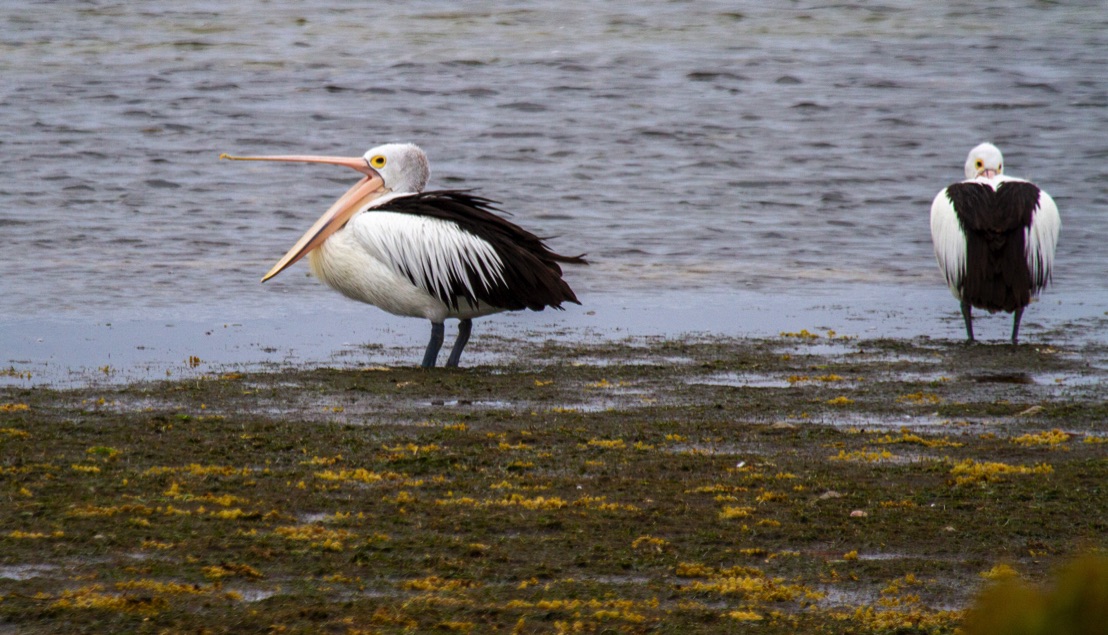
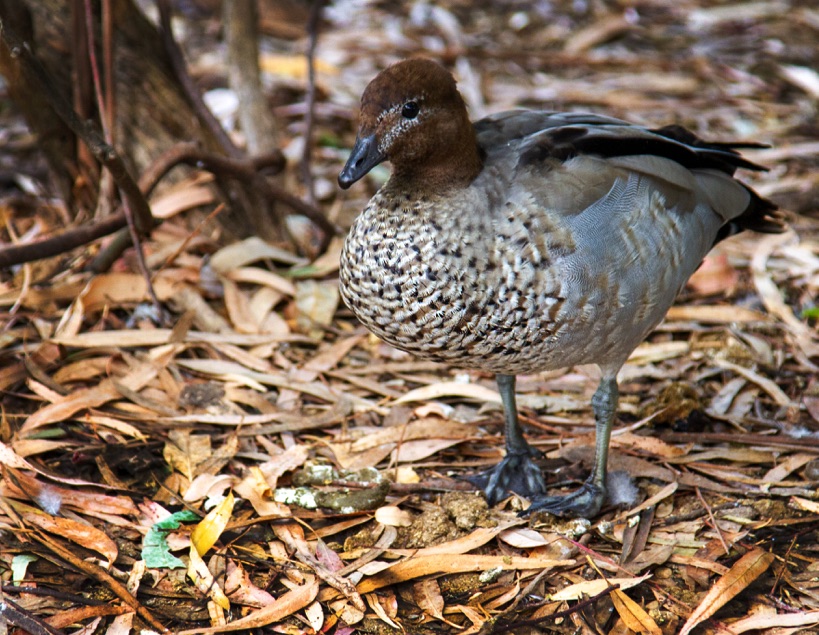
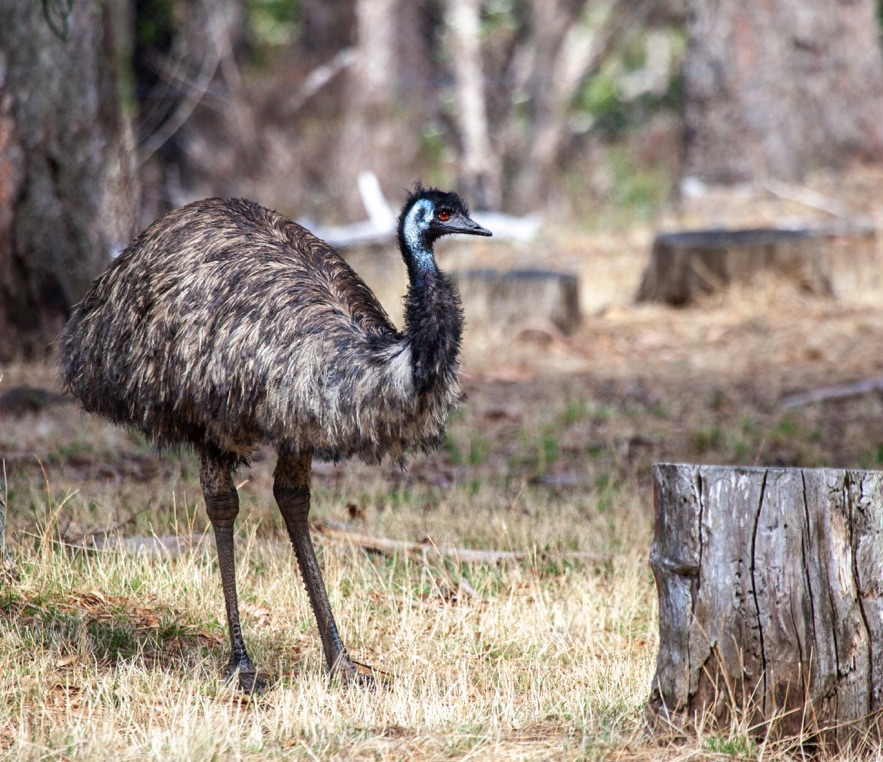
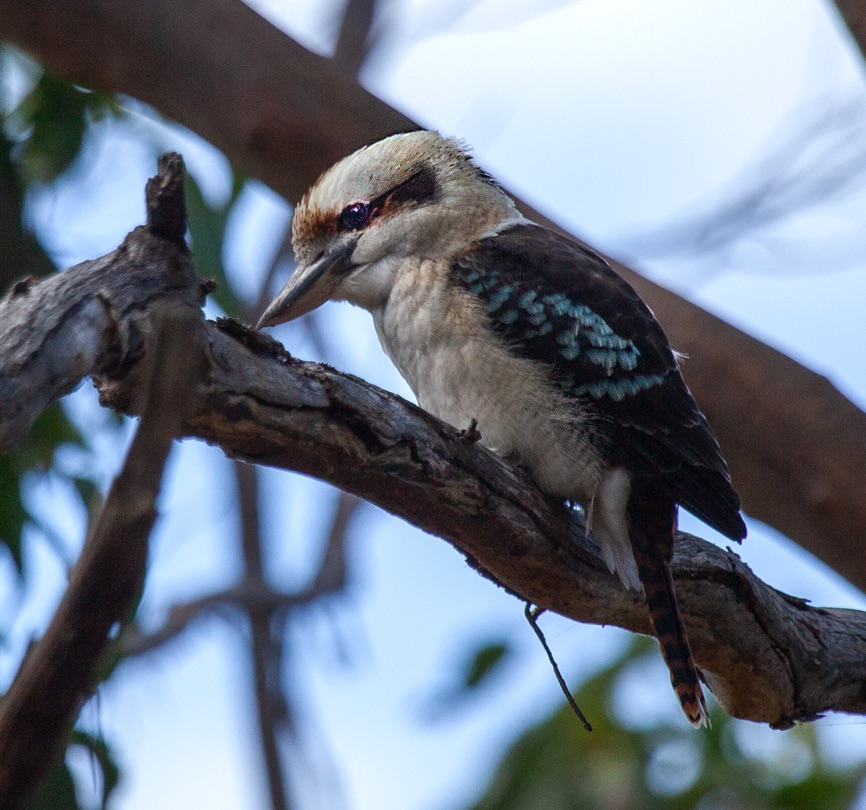
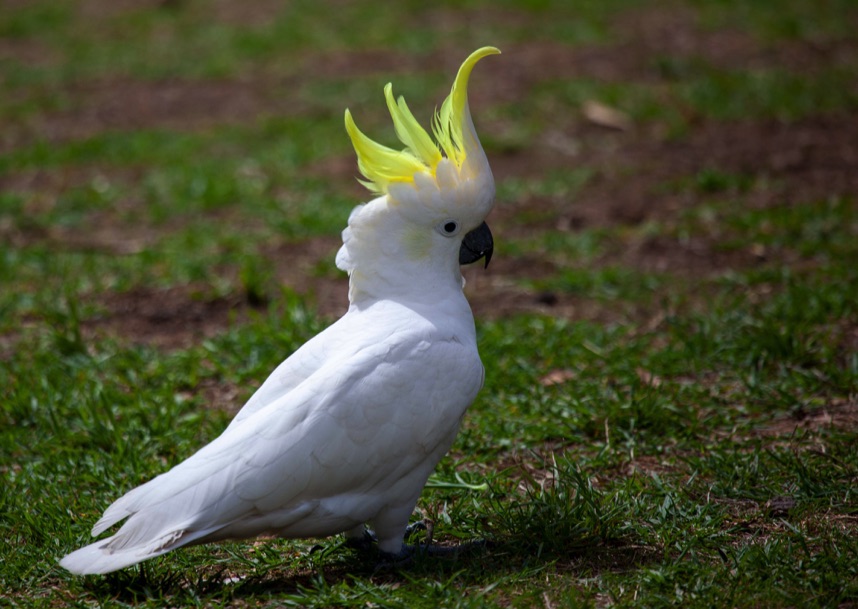
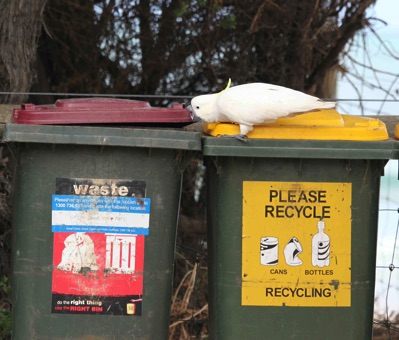
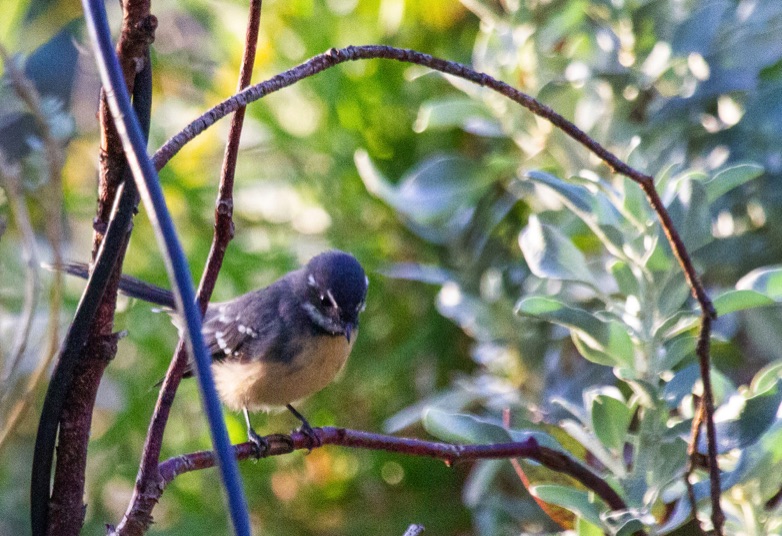
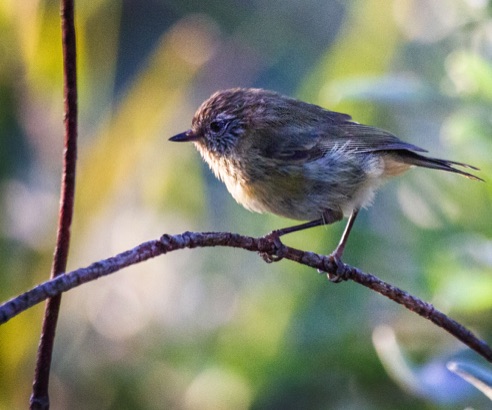
Emu
Striated Thornbill
Laughing Kookaburra
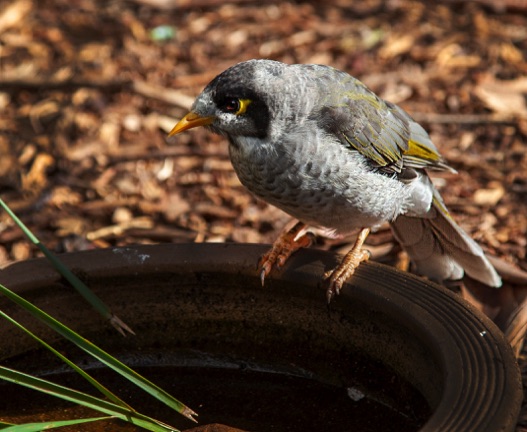
Australia Pelicans
Noisy Minor
Grey Fantail
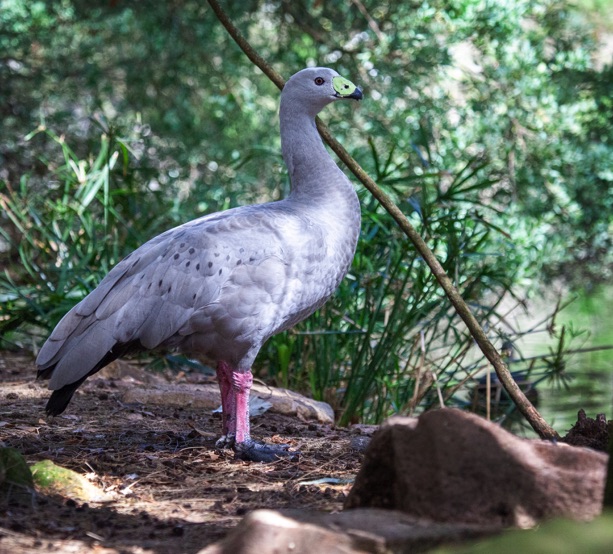
Cape Barren Goose
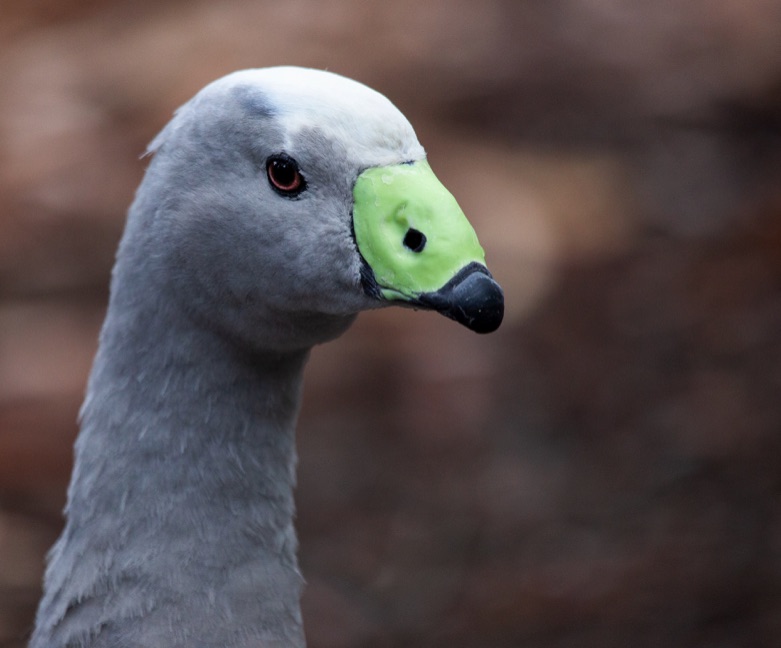
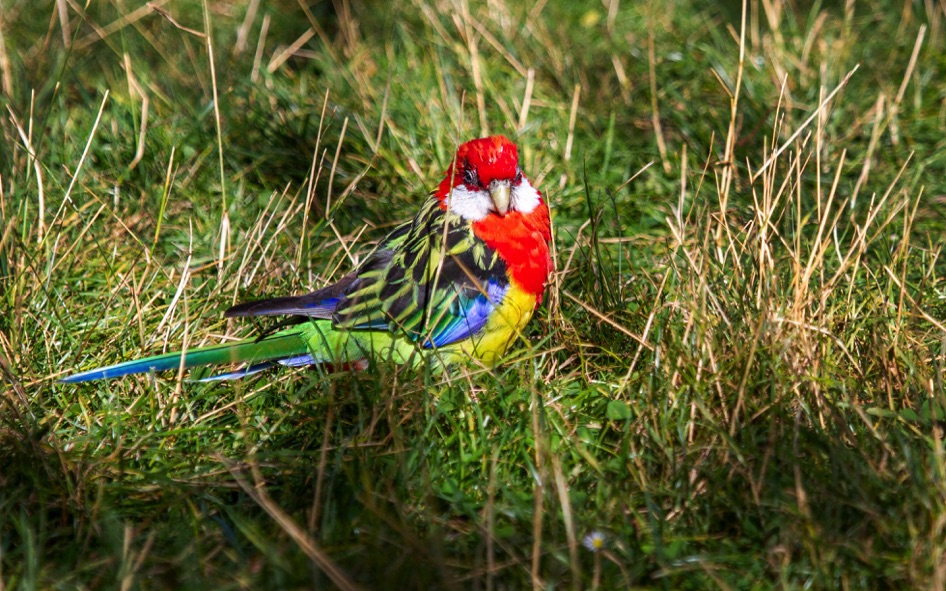
Eastern Rosella
Australian Wood duck or Maned Duck
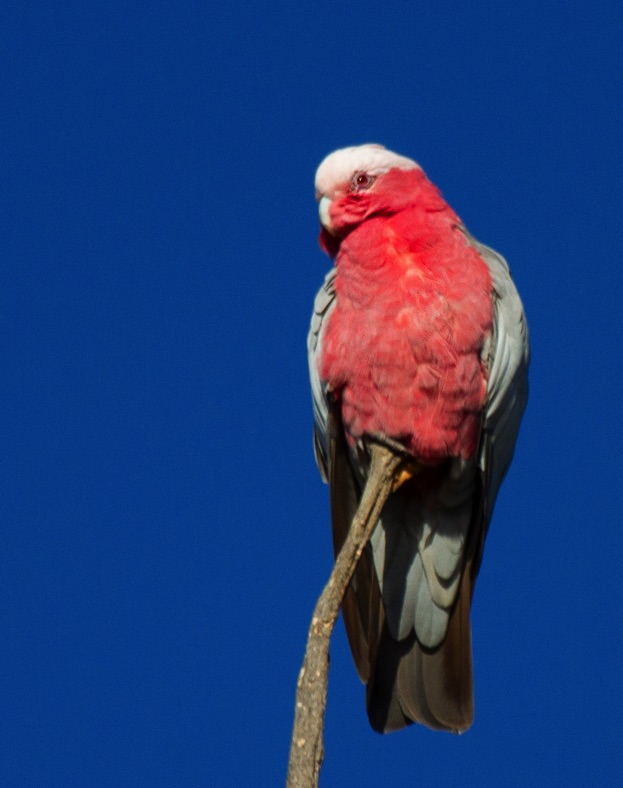
Galah
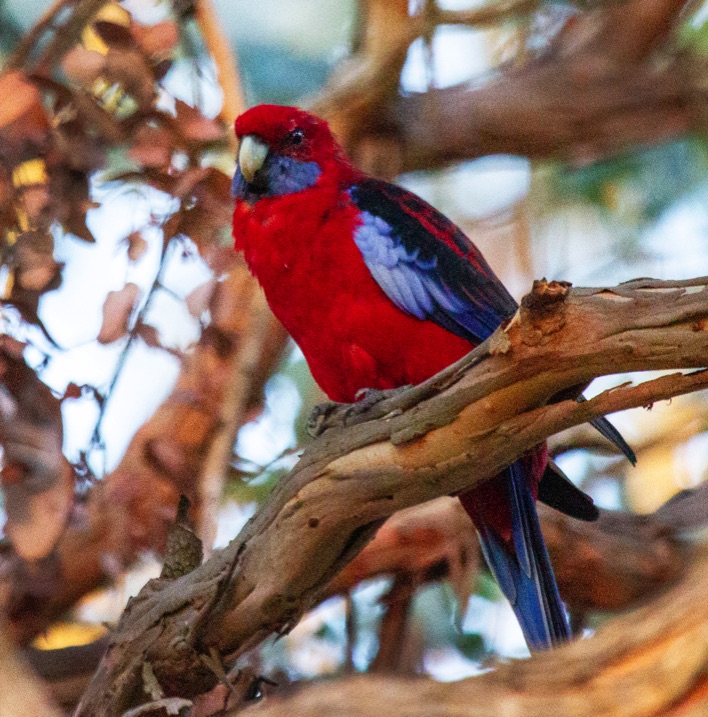
Crimson Rosella
Green Rosela
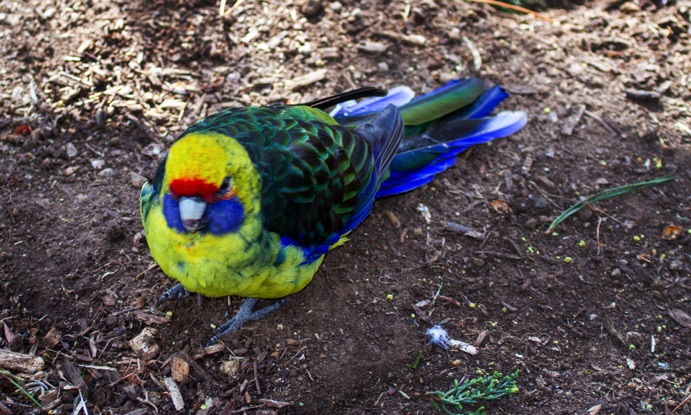
Rainbow Lorikeet
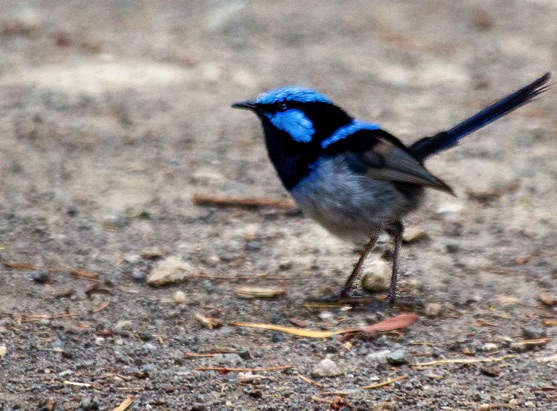
Superb Fairywren
male
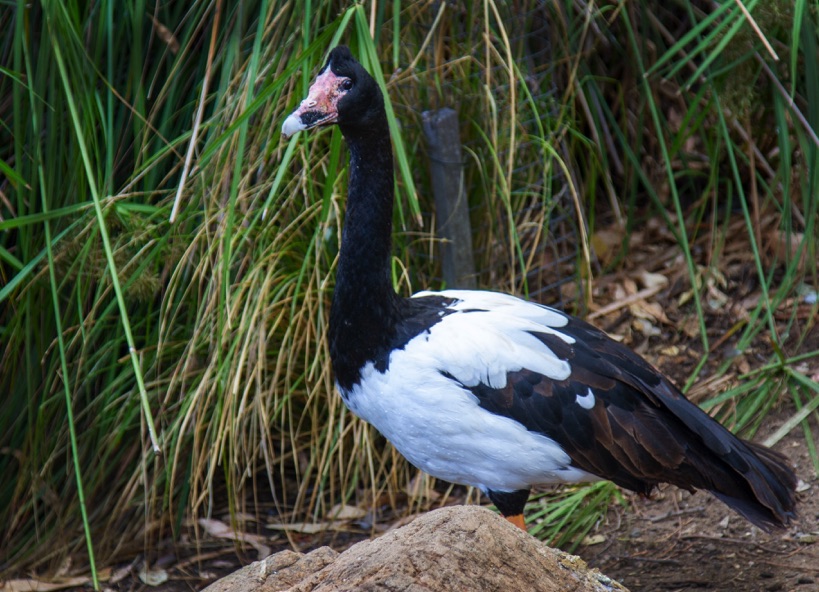
Magpie Goose


Emus are the largest bird in Australia and second largest in the world, after the ostrich, averaging 5.7 feet in height and weighing roughly 110 to 130 pounds.
Tiny wings prevent these ratites from flying, but their long legs allow them to run up to 31 miles per hour, covering hundreds of miles in search of food and water.
Female emus are larger than males and court them during the summer months (December/January), fighting other females for the privilege. Males construct the nests and incubate the eggs for an average of 56 days, forgoing food and water until the chicks hatch.
Sulphur Crested Cockatoo
Superb Fairywren
female
Crested Pigeon
It is in the kingfisher family and named because of it distinct teritorial call. The Kookaburra is monogamous and mates for life.
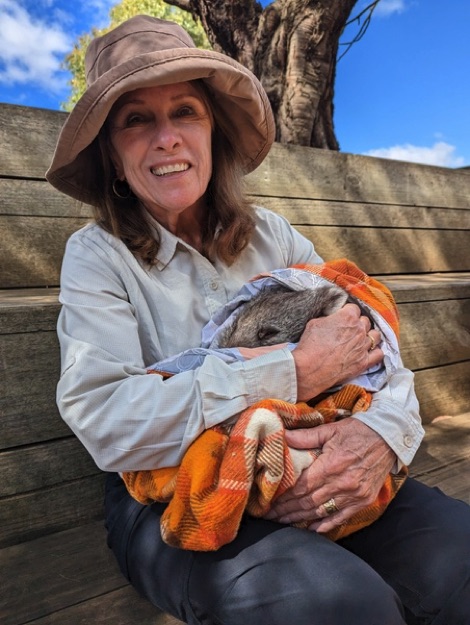
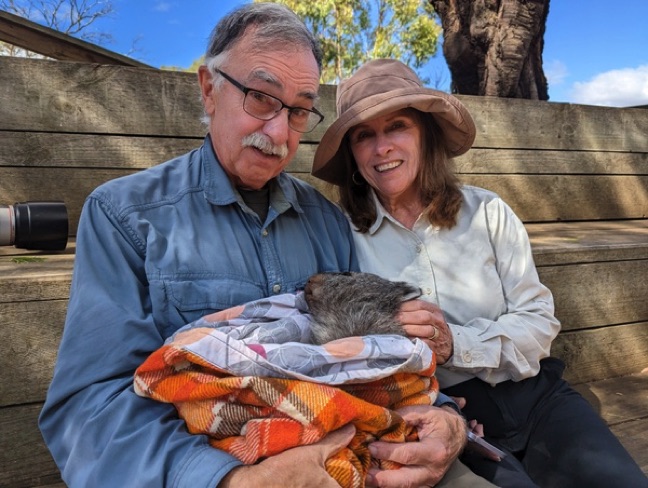
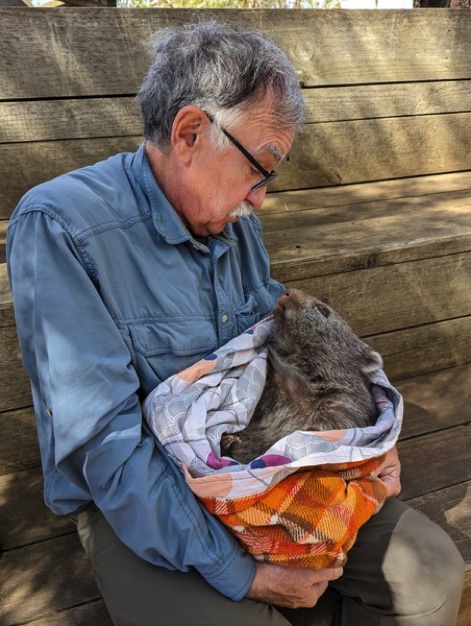
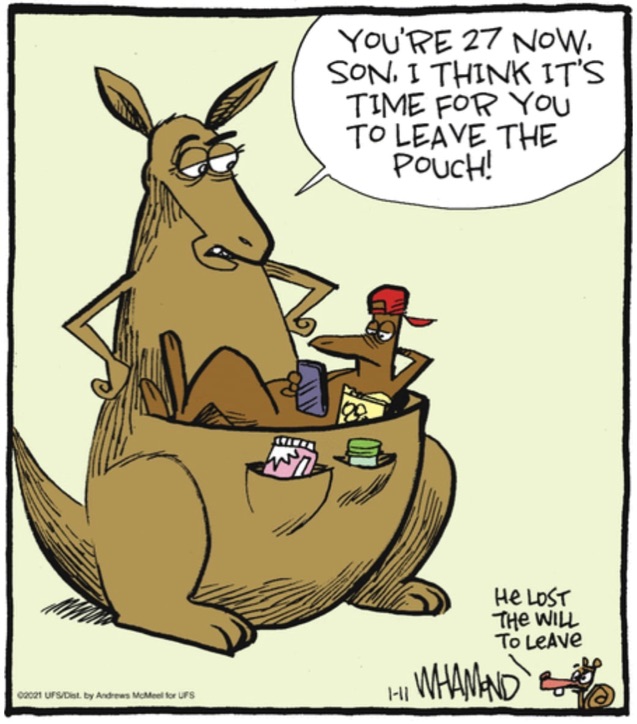
The Cockatoo can be a pest at picnic spots. This one is going to check out the trash. Notice he skipped the recycle bin.
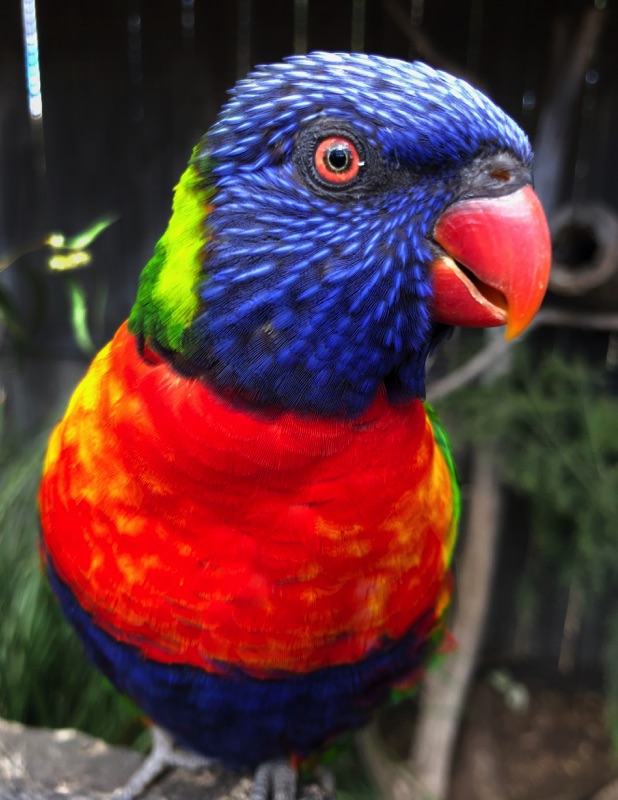
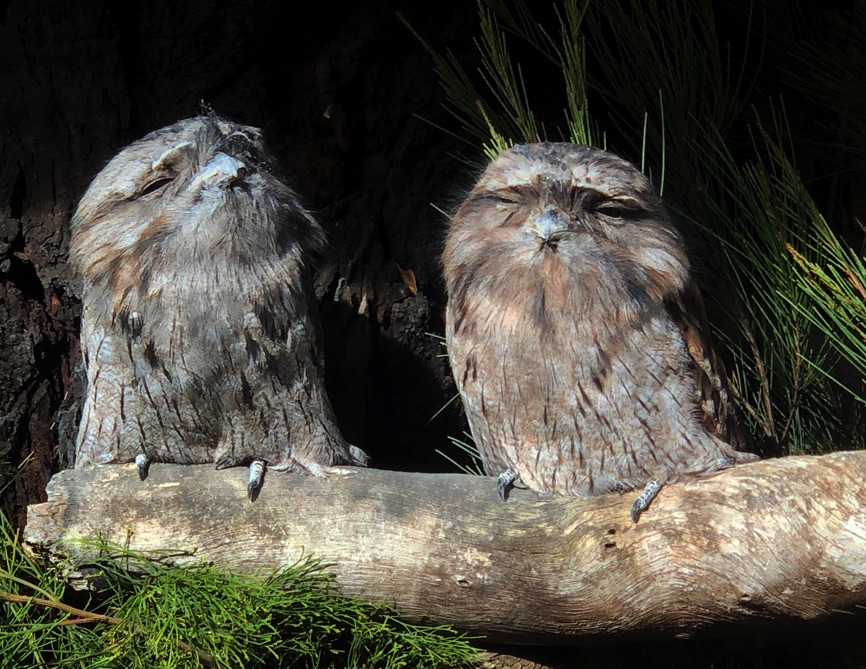
Frog-mouthed Owls
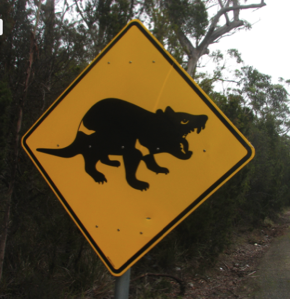
Because the Tasmanian Devil feeds on carion, often road kills, it often becomes roadkill itself.
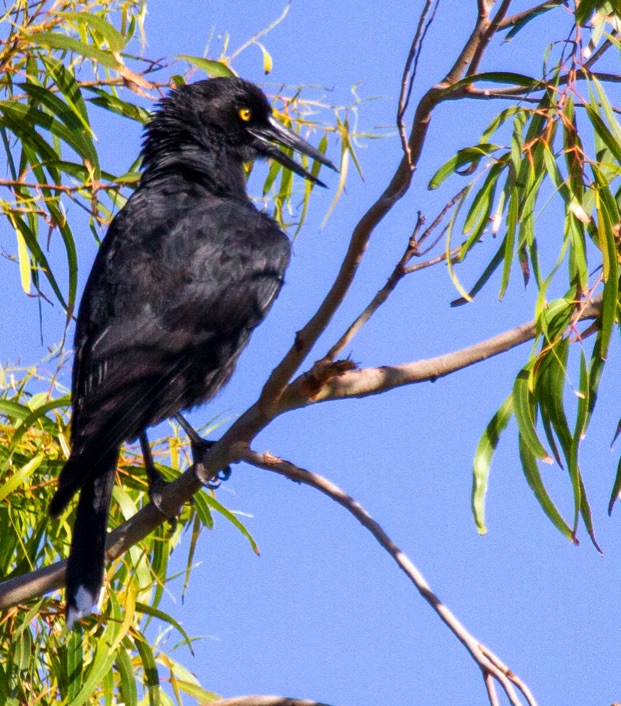
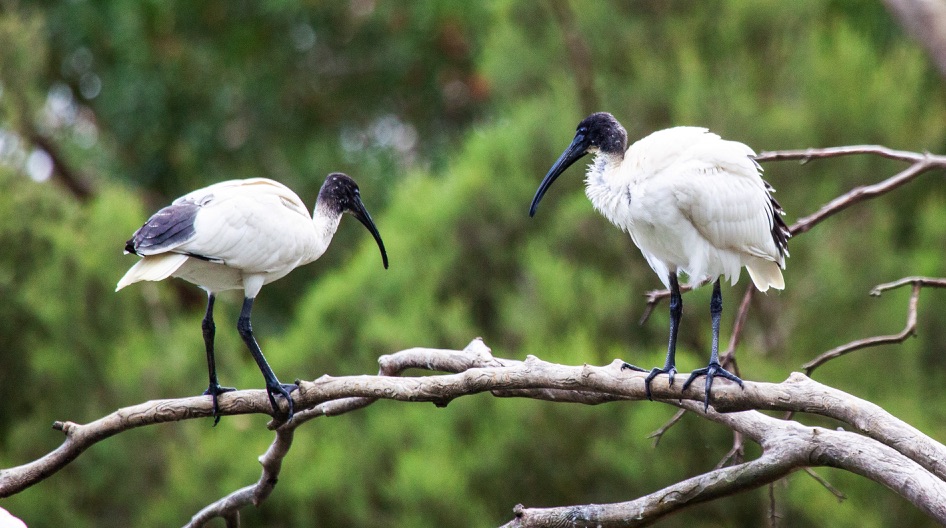
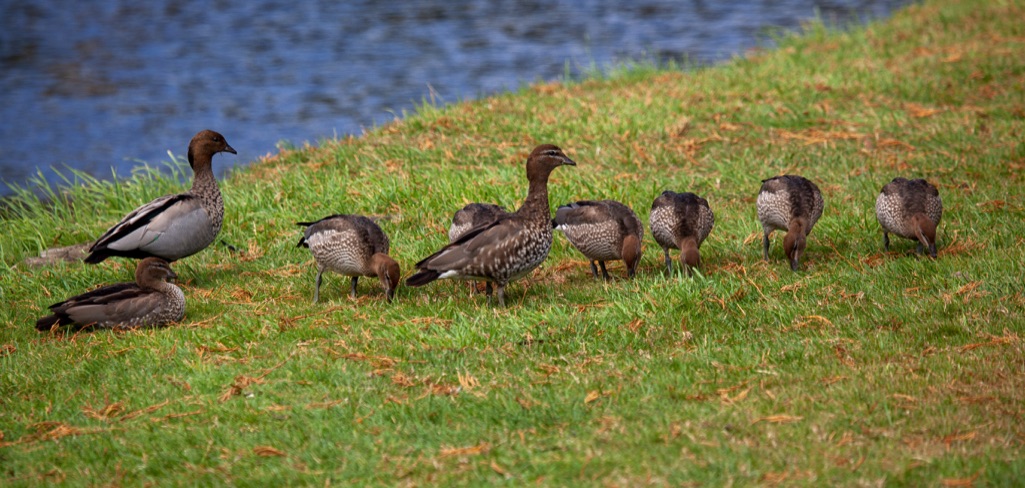
Grey Currawong
Australian White Ibis
Australian Wood Duck family
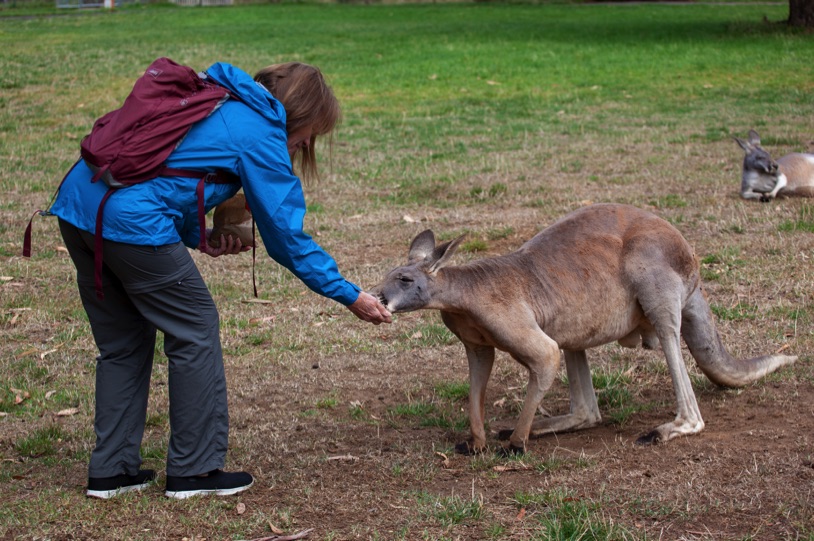
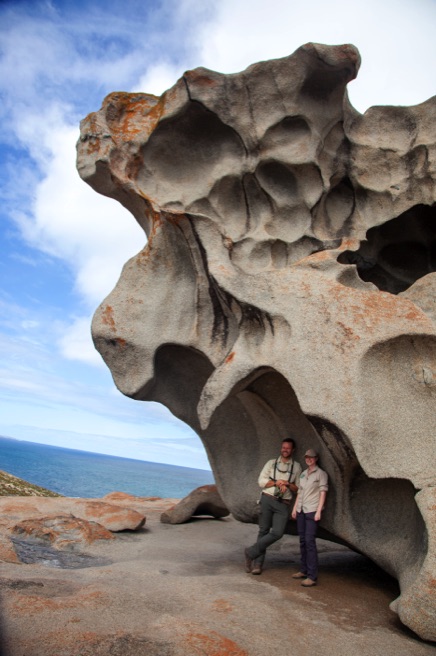
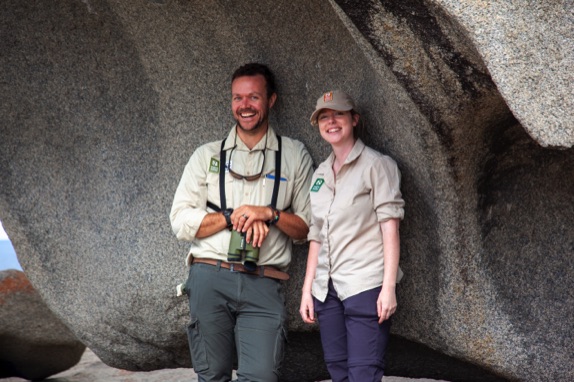
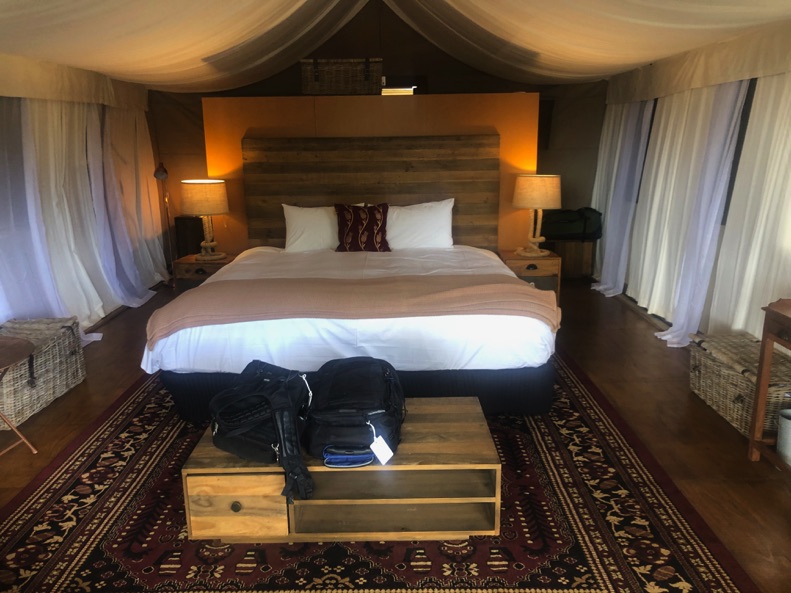
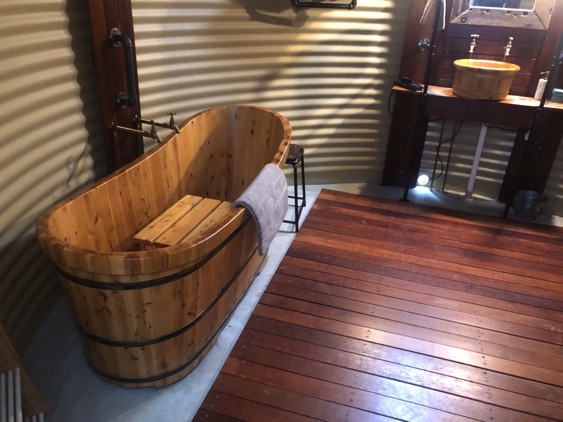
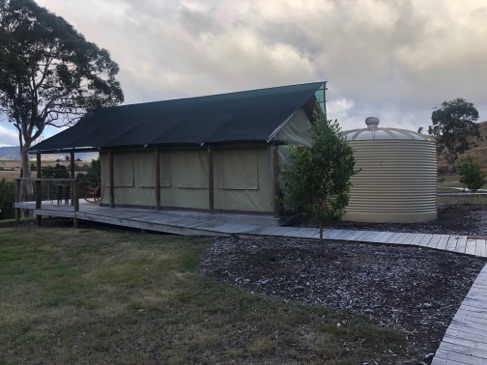
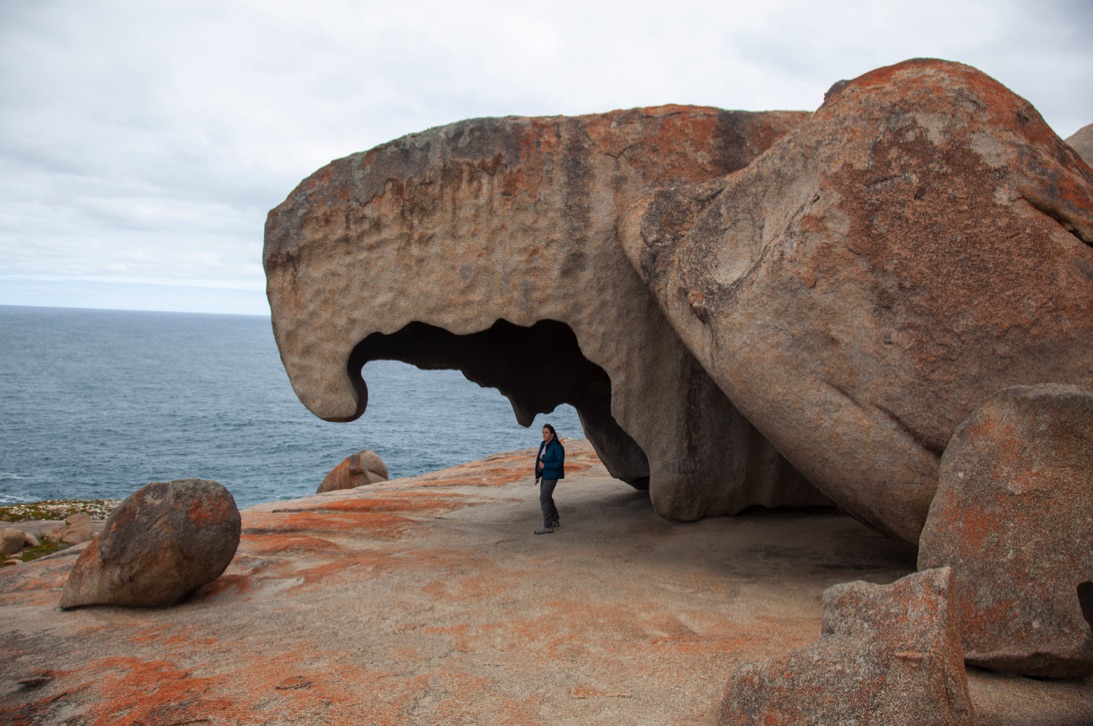
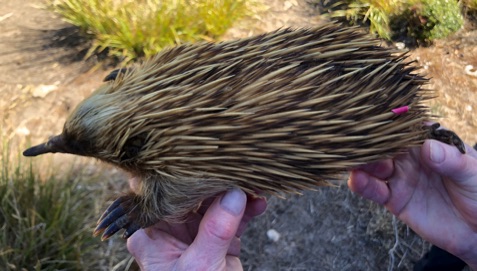
We stayed two nights at the Truffle Lodge–Gretna, Tasmania
As you can see we were really roughing it.
We visited several wildlife sanctuaries, birthing and rehabilitaion centers on our trip. We got up close and personal with several species.
We were able to hold an infant wombat at the birthing center. Cheryl really wanted to take this one home.
Cheryl holds a specimen of the Echidna
There's a place on Kangaroo Island called The Remarkable Rocks. It took 500 million years for rain, wind, and pounding waves to create these granite boulders which are now part of the Flinders Chase National Park.
Square poops
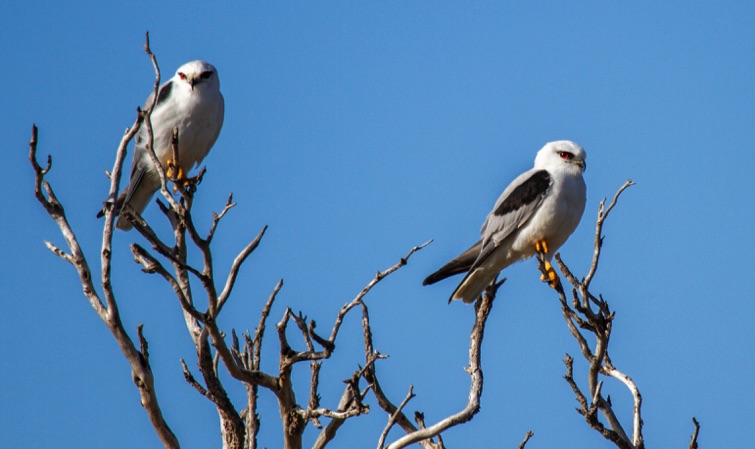
Black-shouldered Kites
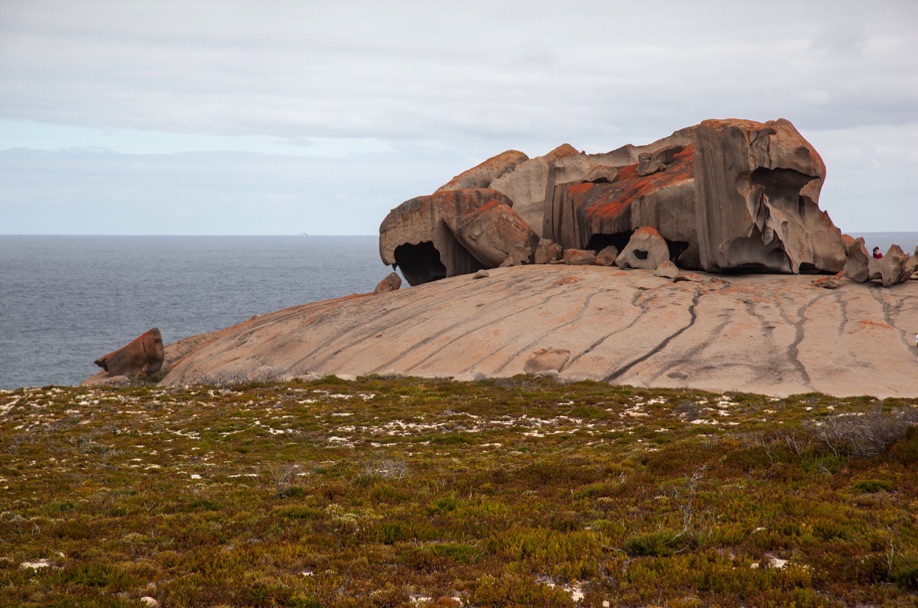
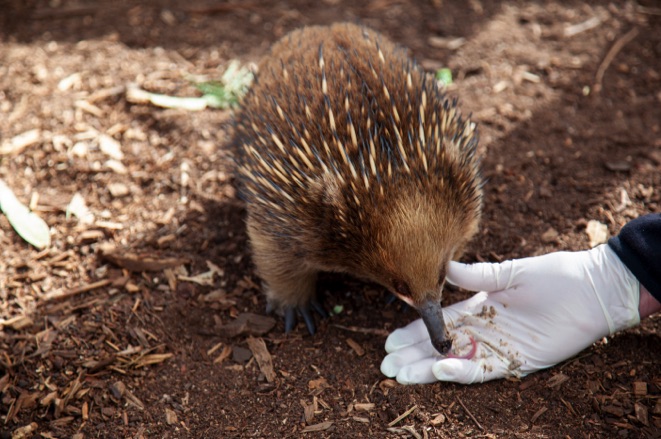
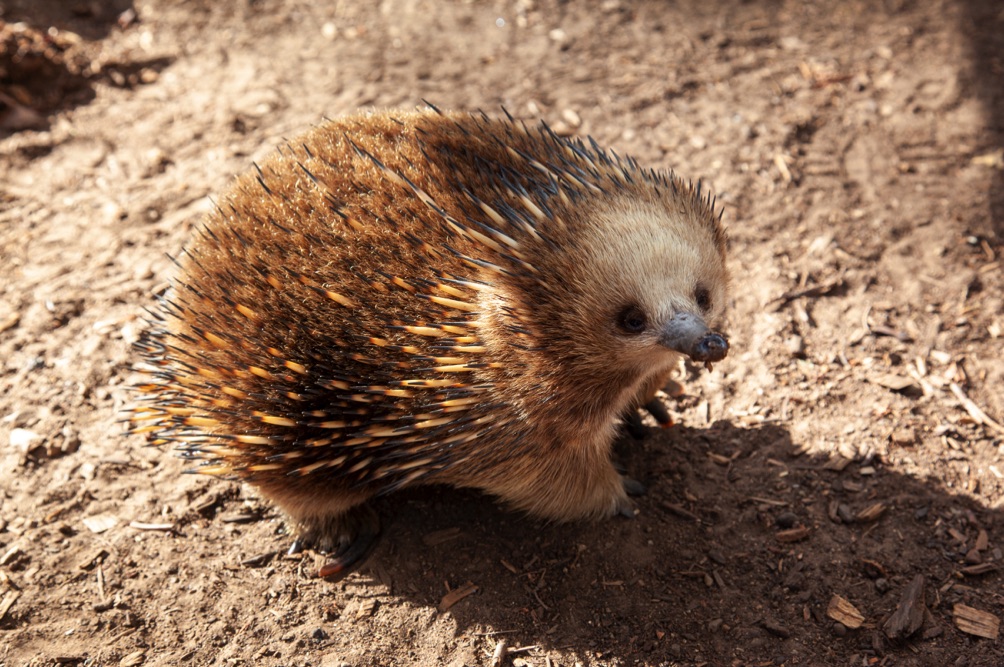
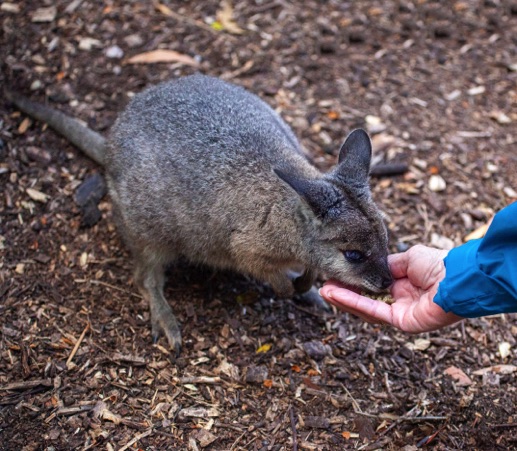
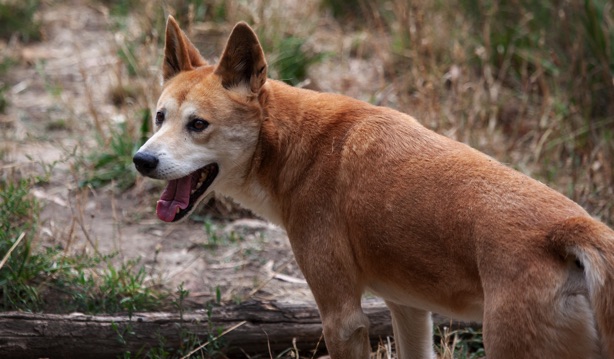
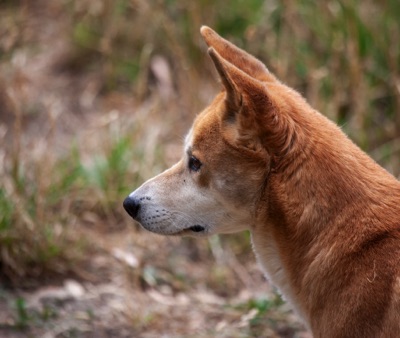
The Dingo
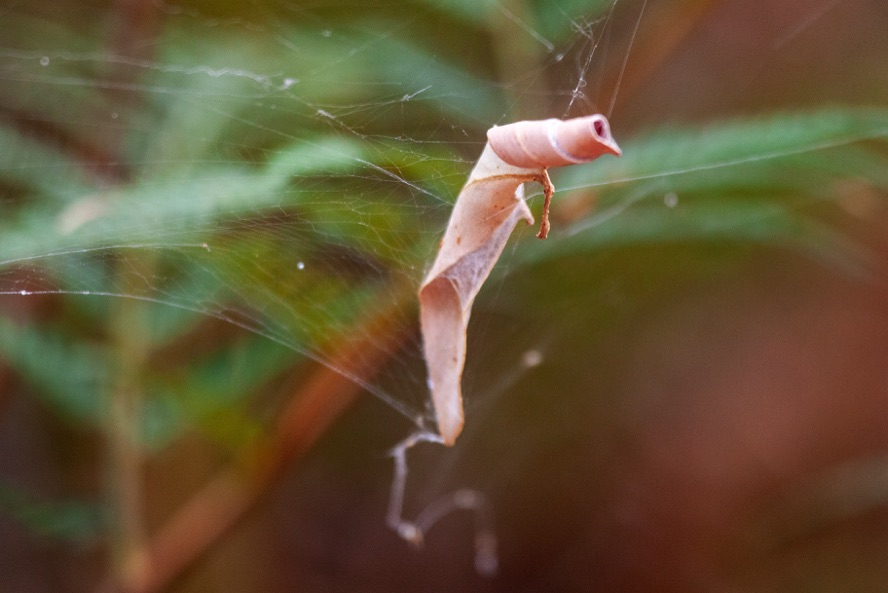
The Leaf Curling Spider
This spider lives in leaves that it has twisted and curled. The species form pairs living together in the same leaf. The female ocassionaly cannibalise the cohabitating male, independent of whether she has had food. Its normal diet is flying insects caught in the web.
Fossil evidence shows the Dingo has probably been in Australia for at least 5000 years. Dingo burials discovered at archaeological sites shows its importance and companionship to many First Nations peoples. They figure prominently in ritual, songlines and stories.
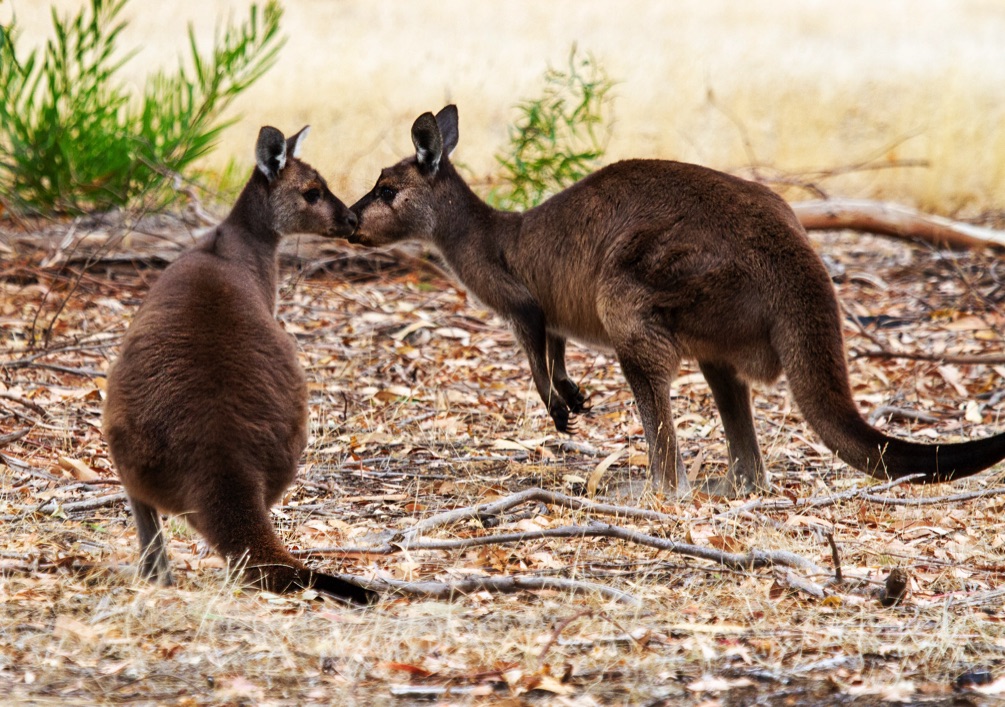
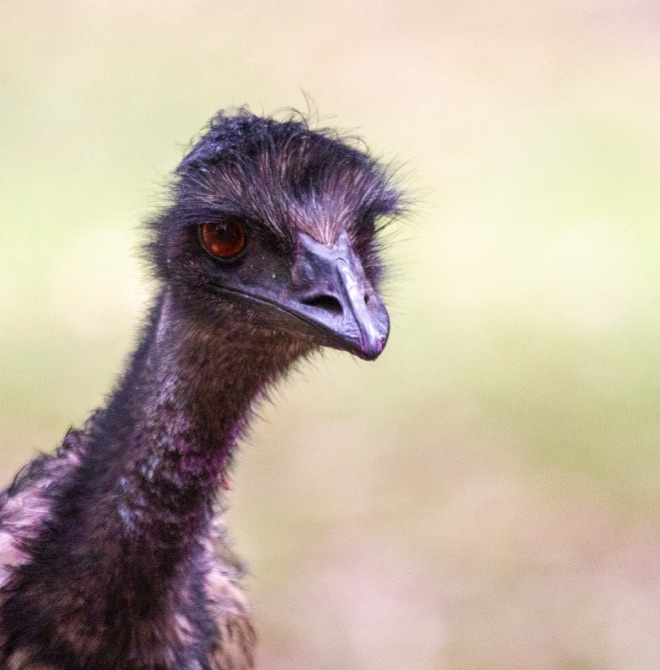
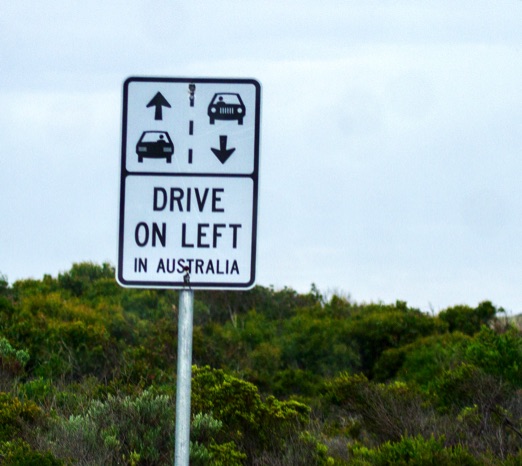
They drive on the "wrong" side in Australia.
What was interesting, and took getting use to, is that they walk on the wrong side too, on pathways, sidewalks, aisles, etc.
Female emus sometimes stay by the nest, defending the eggs, but typically after the eggs are laid, females will venture off to find another mate. A productive mating season for a female emu will see her nest three times.
Once the chicks are born, male emus will stay with their offspring for up to 7 months, protecting them and teaching them how to find food.
The joey stays in the pouch nursing for about 5 months. For another 6 weeks it is weaned on predigested eucalyptus called pap that is lapped directly from the mother’s anus. Pap is derived from the cecum. This helps innoculate the joey to the toxic euclid that he will soon feed on.
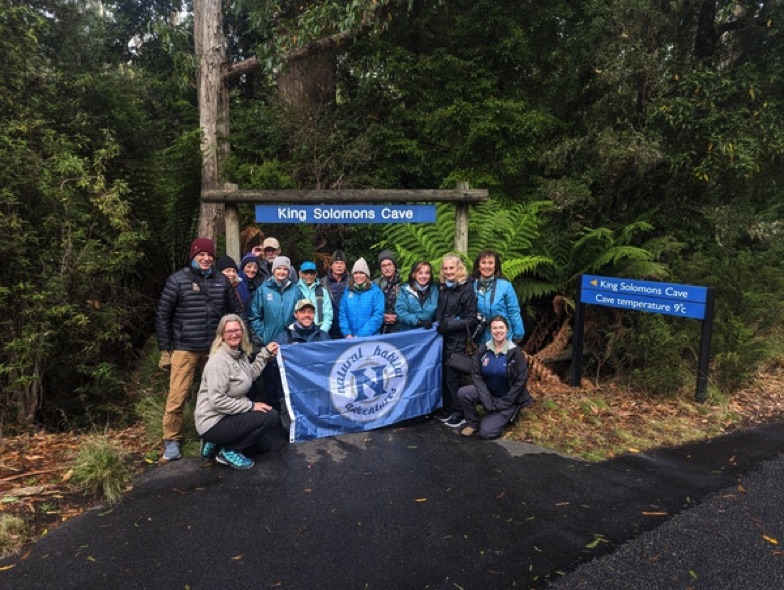
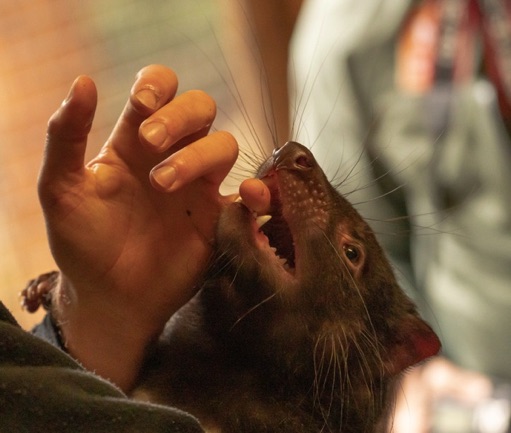

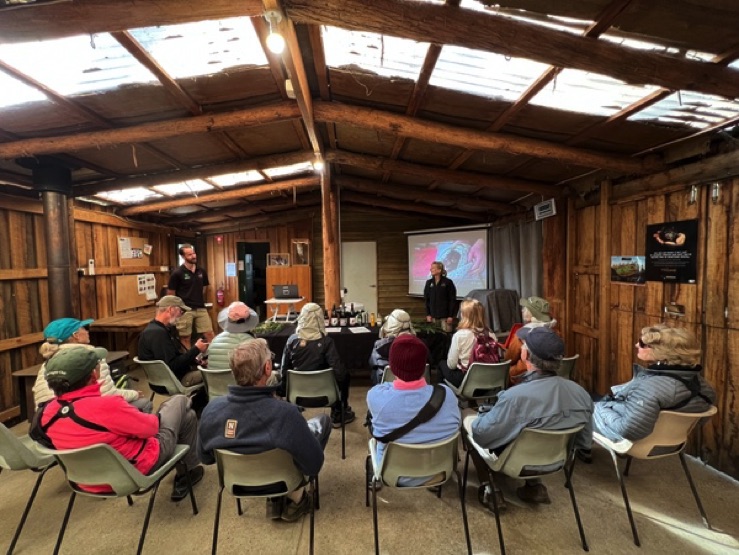
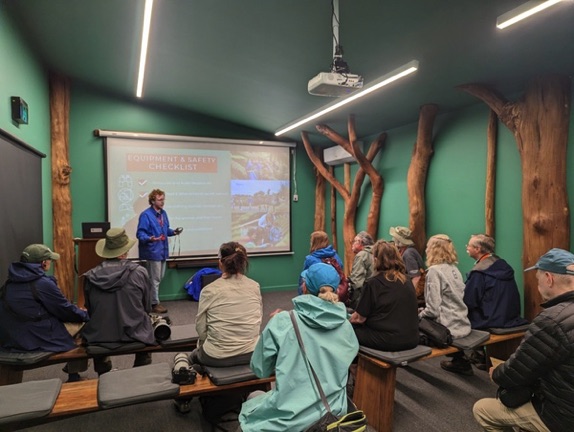
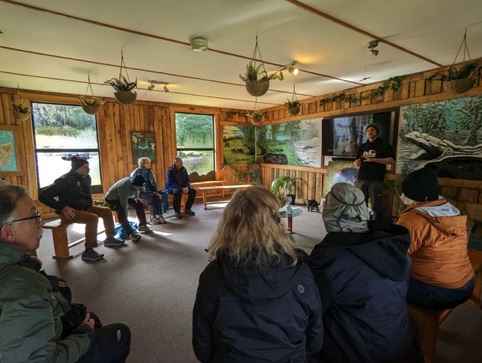
We had several talks by local experts to explain the fauna and flora we were seeing, as well as the history of the sites and information on the First Nations.
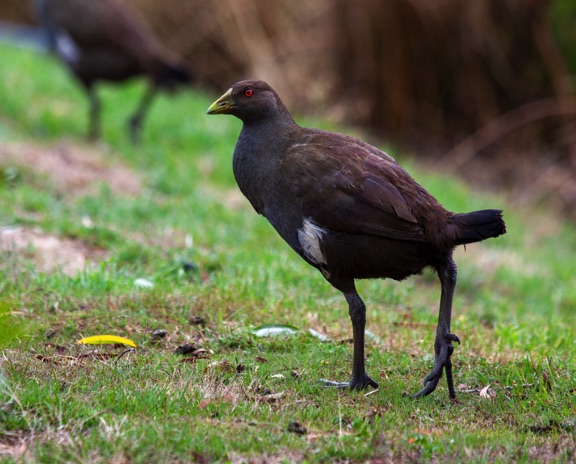
Tasmania Native Hen

A flightless species endemic to the island of Tasmania

Yellow Tail Black Cockatoo
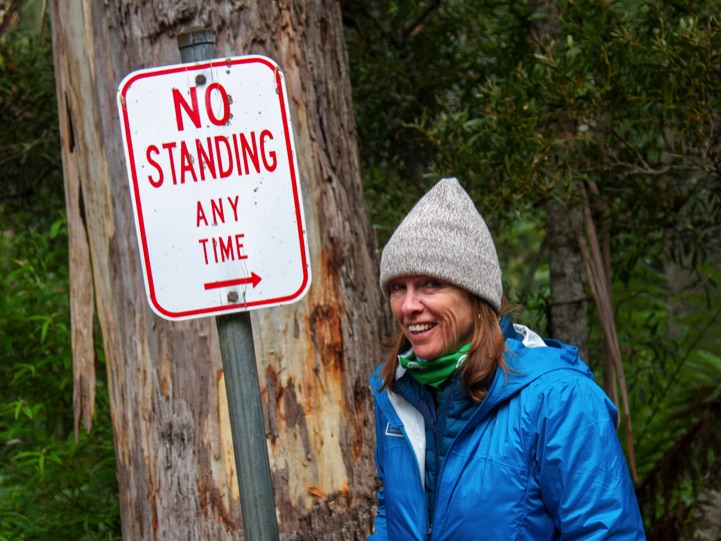
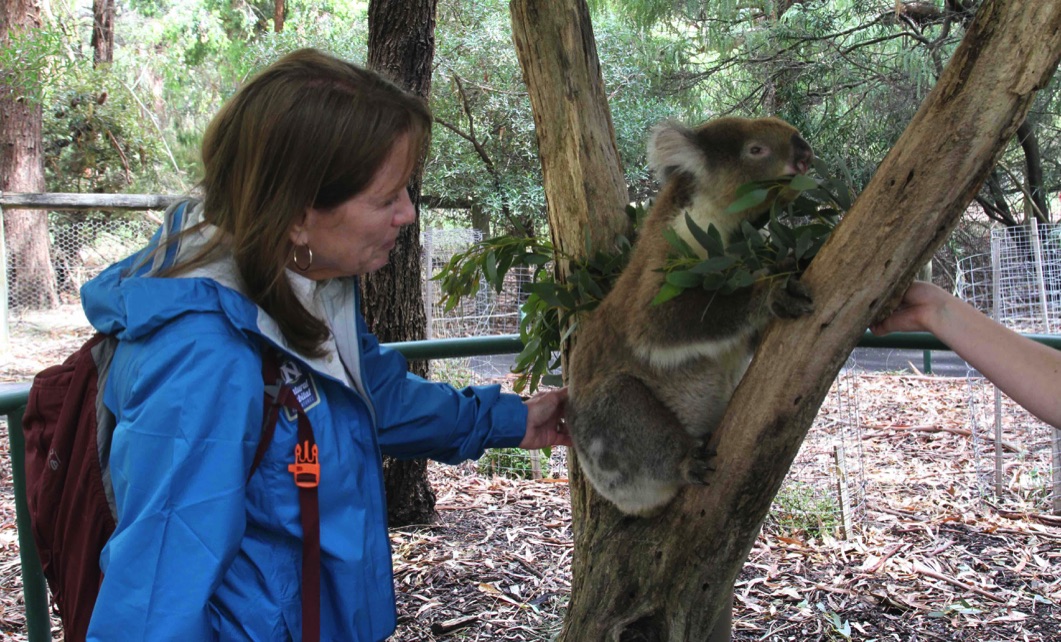
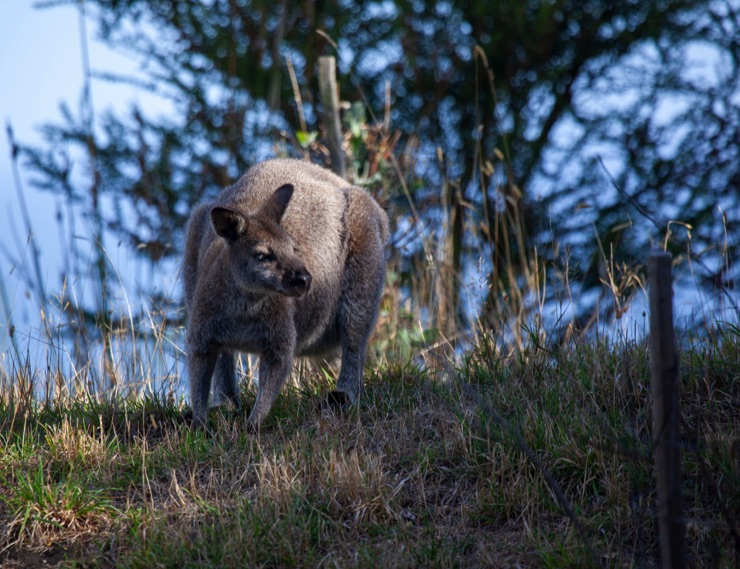
Red-shouldered Wallaby
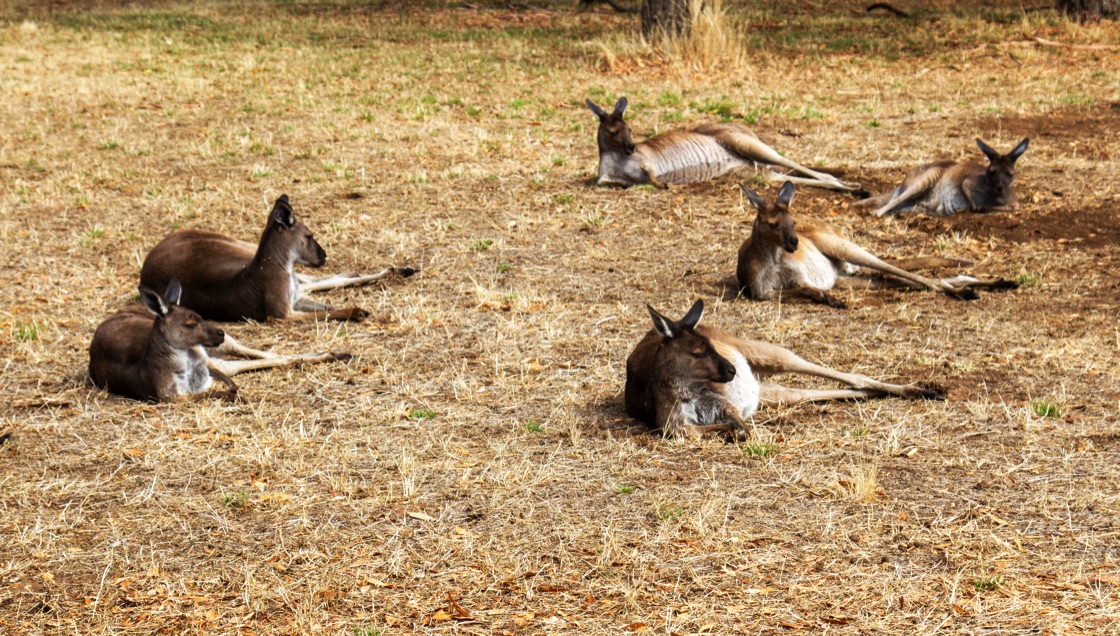
Troop at rest
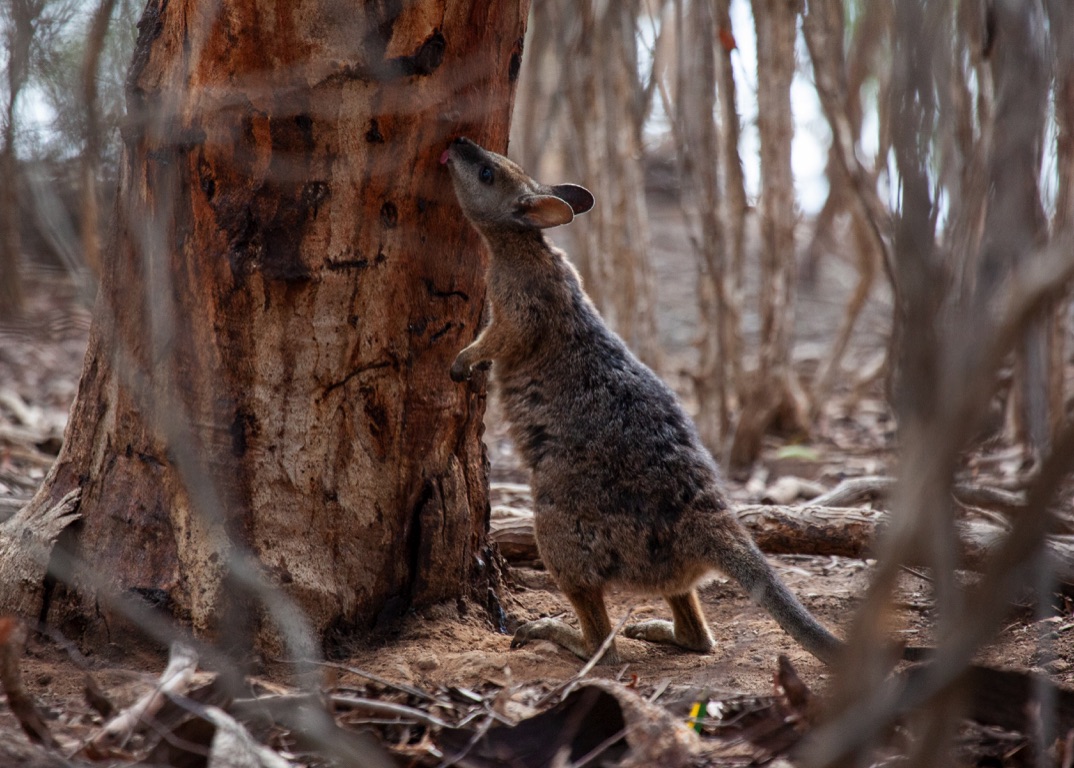
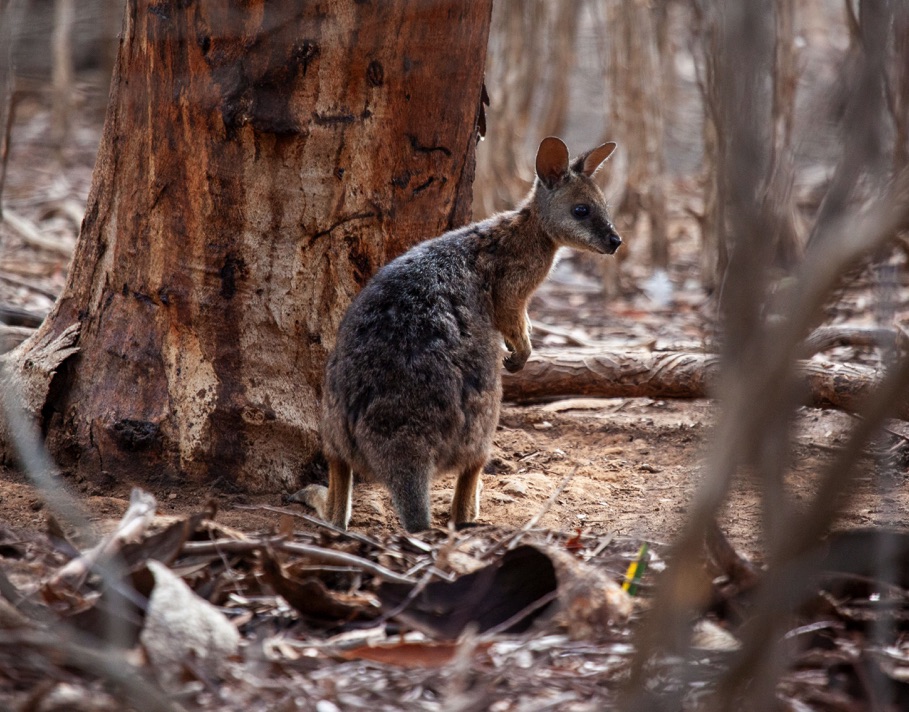
On Kangaroo Island we found this Wallaby licking at the bark of the tree.
I assume there are minerals that they need. There are clearings around the base of the trees from the Wallaby circling it, dragging its tail.
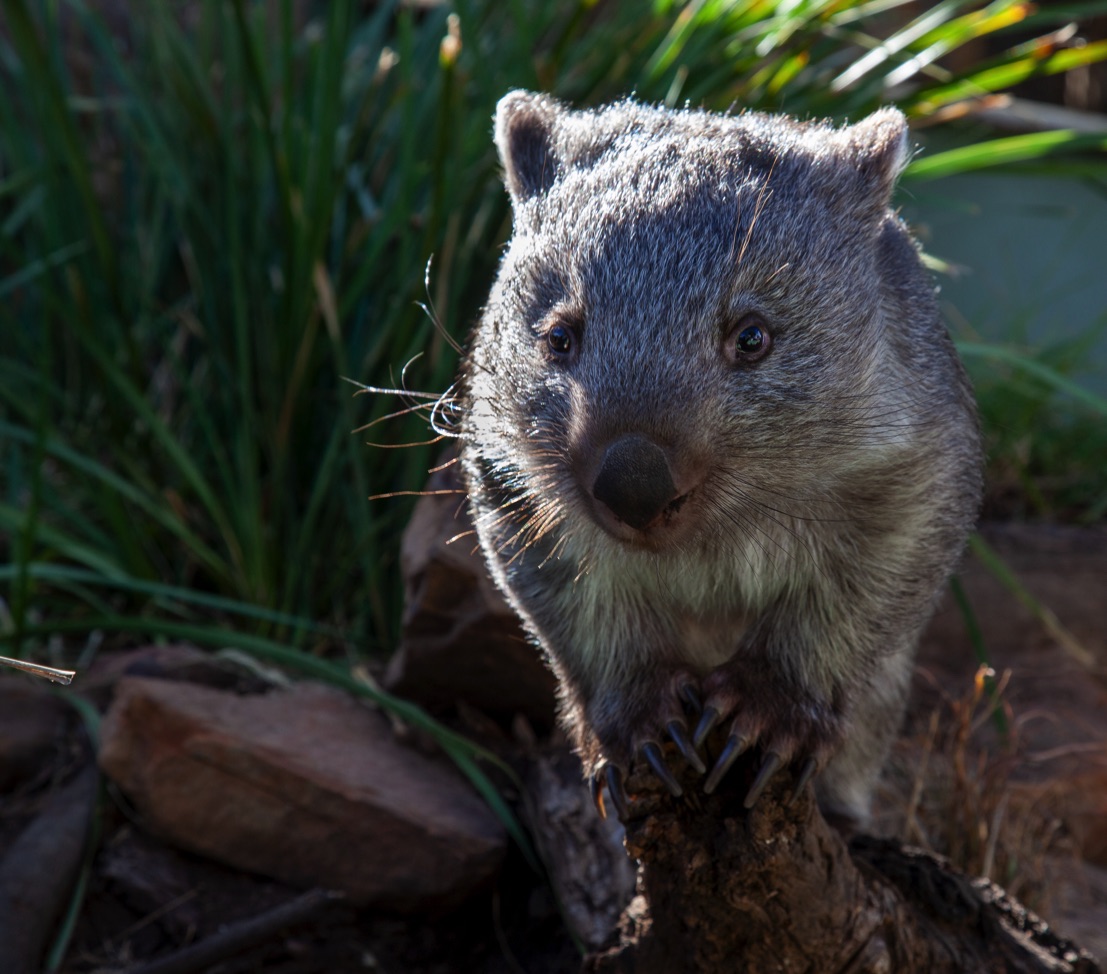
A happy Wombat
On the Great Ocean Drive, Tasmania
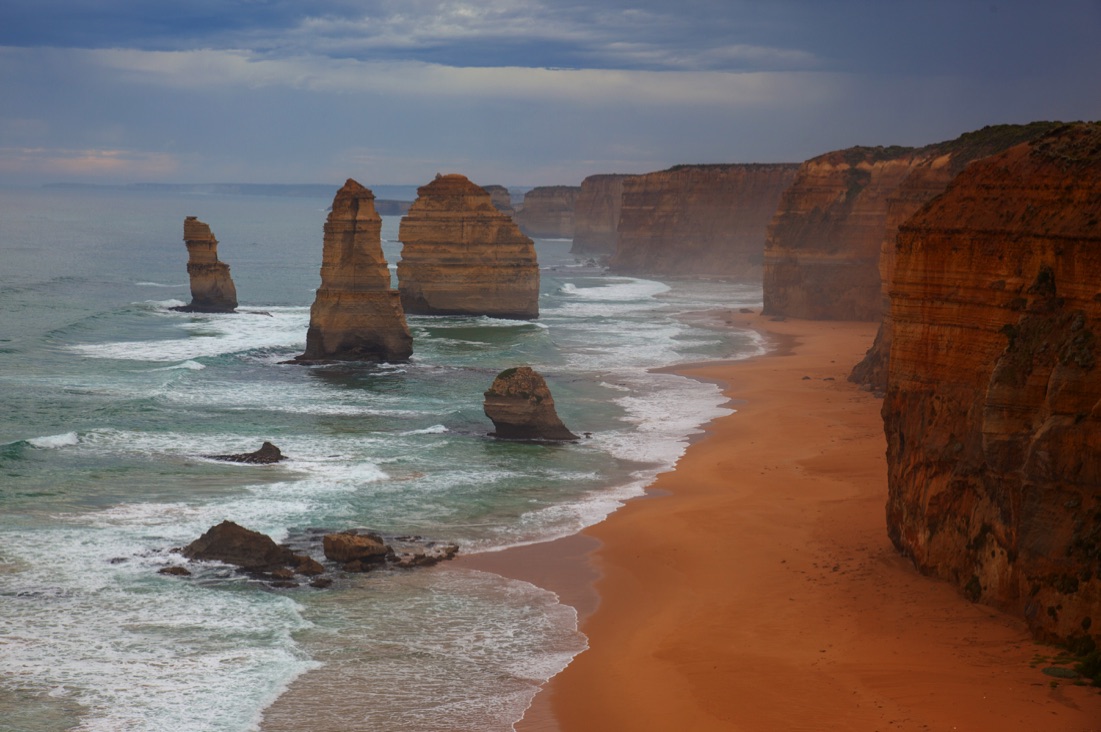
The Twelve Apostles, rugged limestone stacks that rise from the Southern Ocean off Port Campbell National Park
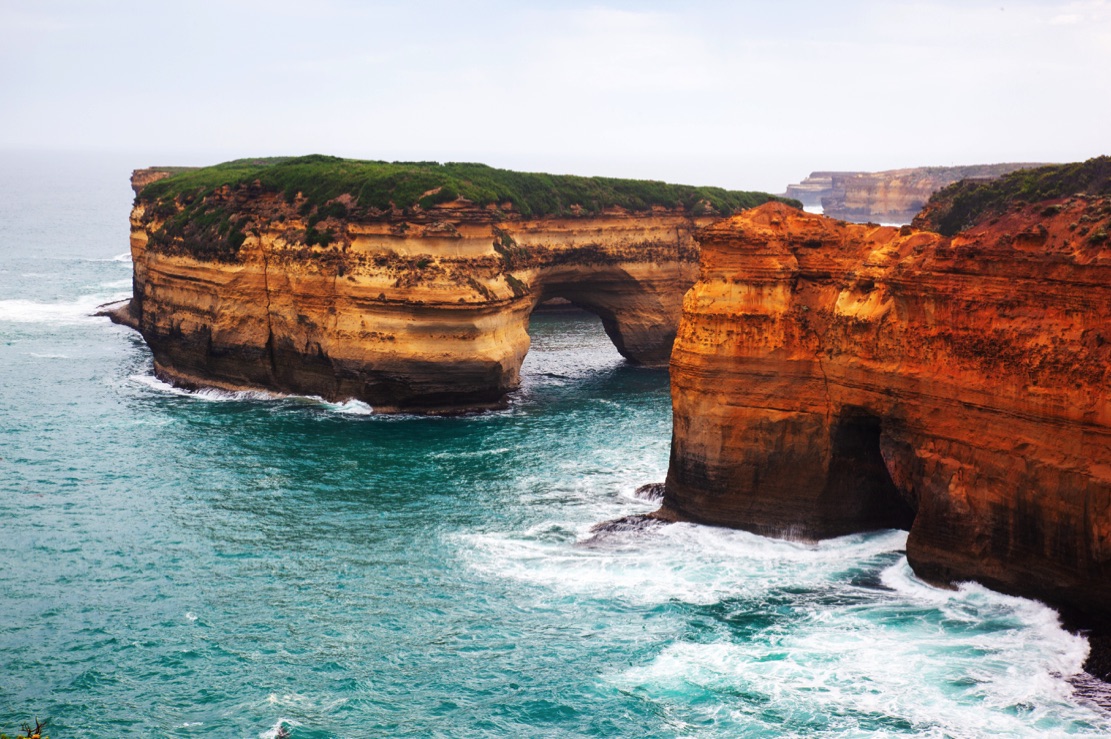
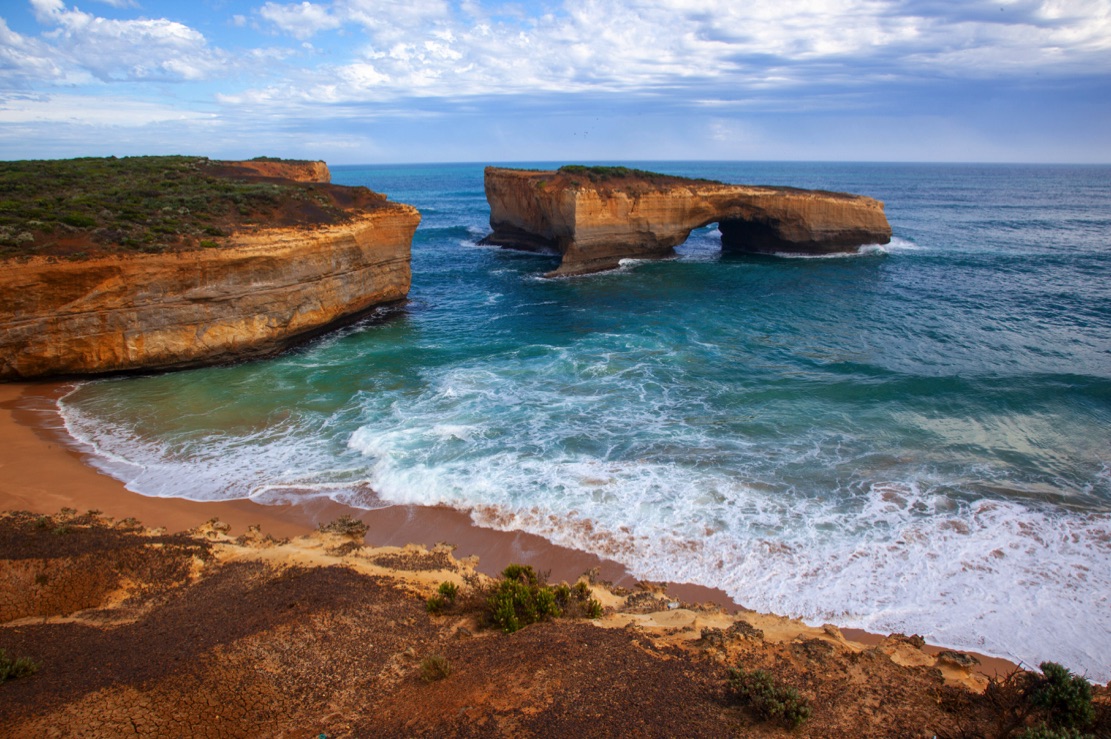
Eroded from mainland cliffs in a process that began 10–20 million years ago, these structures were originally caves, then arches that collapsed to become isolated 150-foot-high rock towers rising straight up from the sea.
The bridge connecting these two features recently collapsed.
More Apostles in the making.
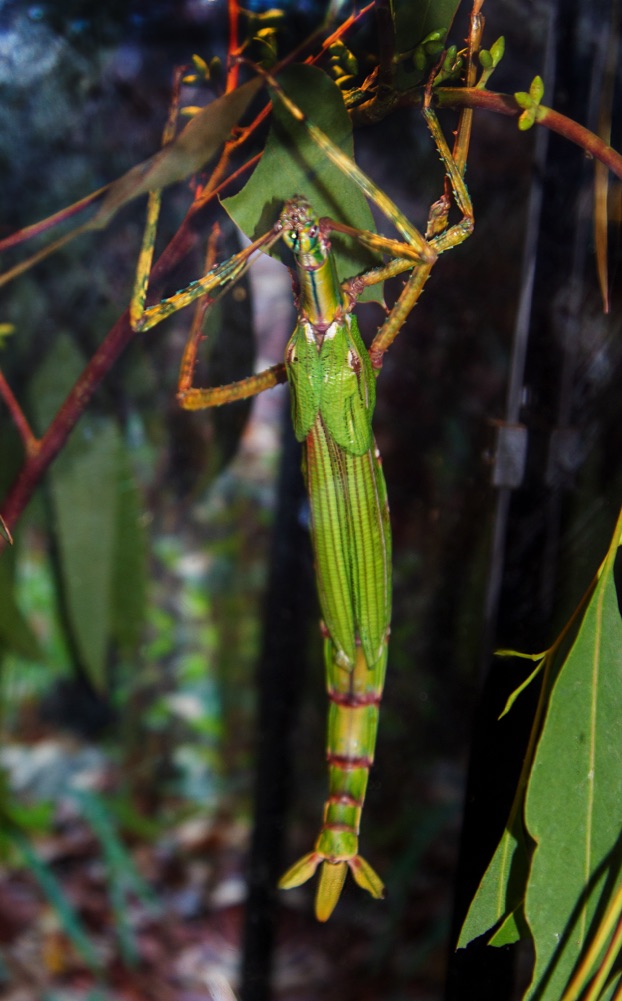
Goliath Stick Insect
They are herbivores, feeding on Eucalyptus or Acacia leaves. They can grow to 10 inches in length.
These insects catch their frass (poo) with tiny filaments at the end of their abdomen and flick it several yards away-this stops predators locating them by finding their droppings.
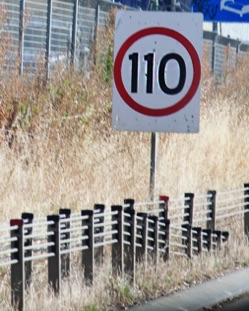
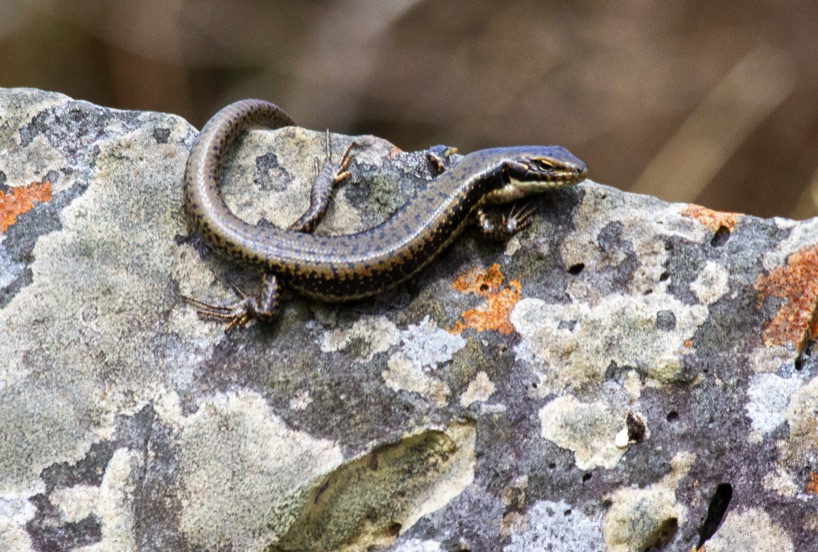
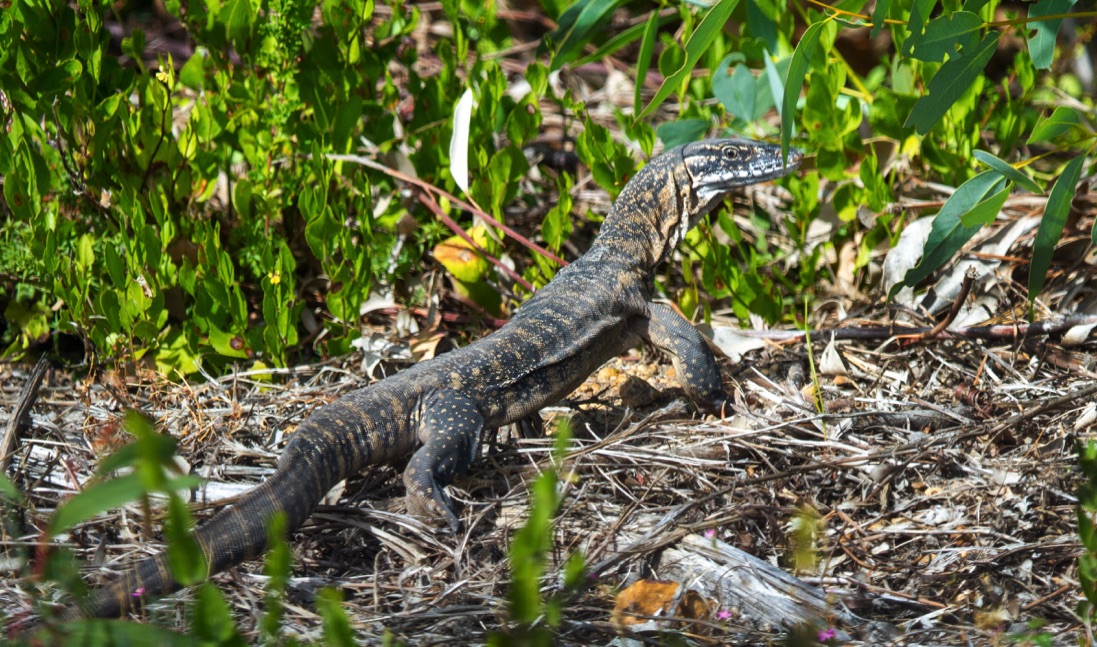
Eastern Water Skink
Goanna Monitor Lizard
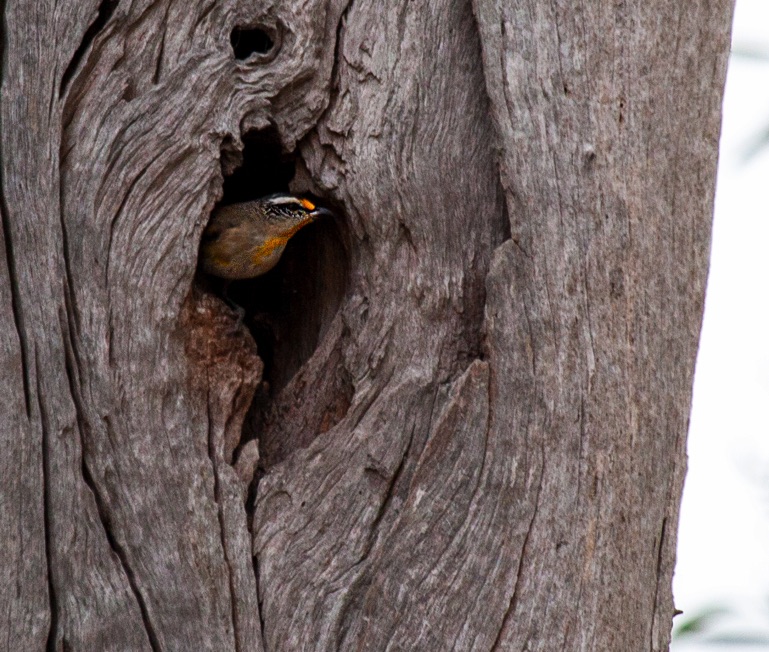
Striated Padalote
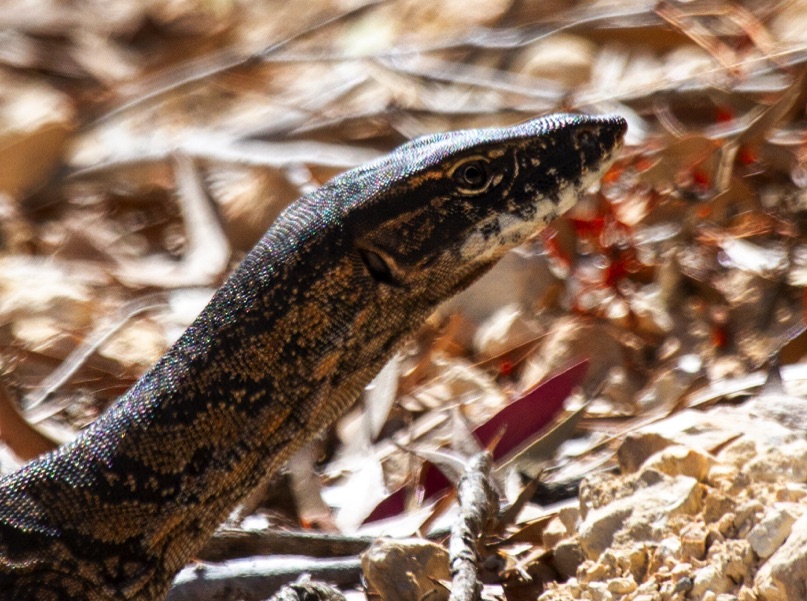
The sea lion will head out into the depths of the Southern Ocean to forage for food.
She will spend up to three day swimming with little rest, sometimes up to 50 miles with dives up to 500 feet.
When her pup is around six months old she will teach it how to catch food in the inner reef before venturing out to sea.
Southern Kangaroo Island
Marine Park
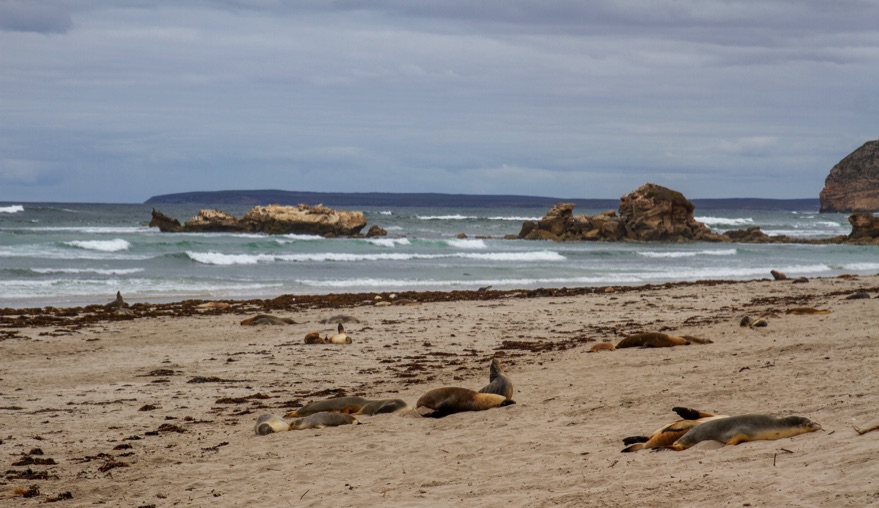
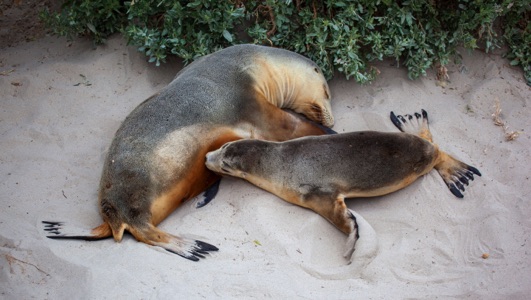
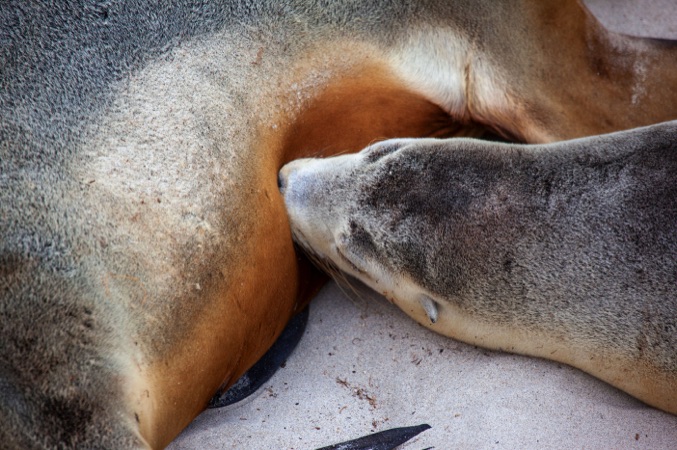
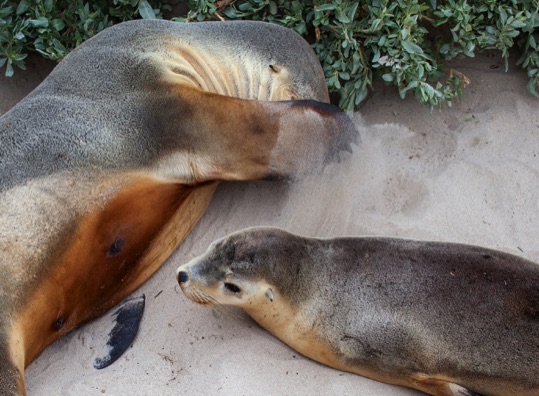
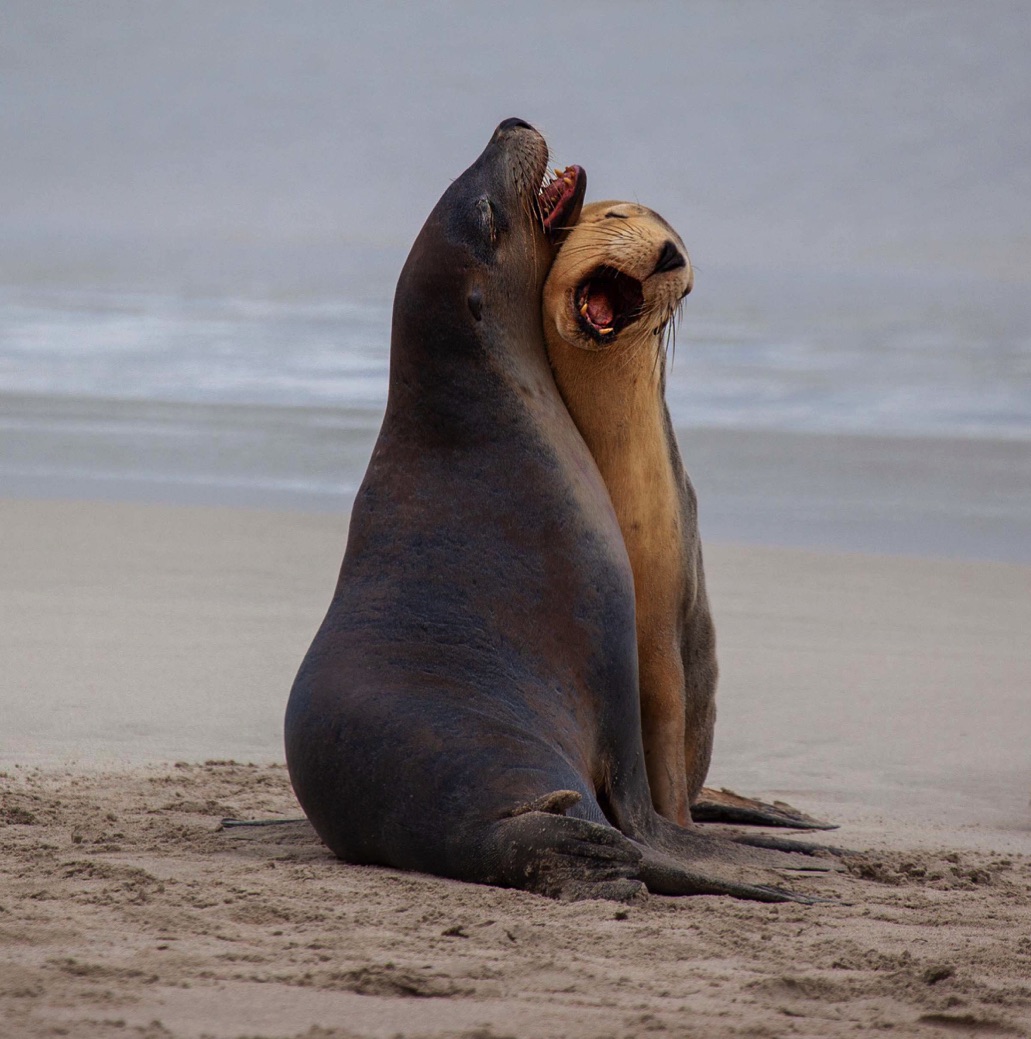
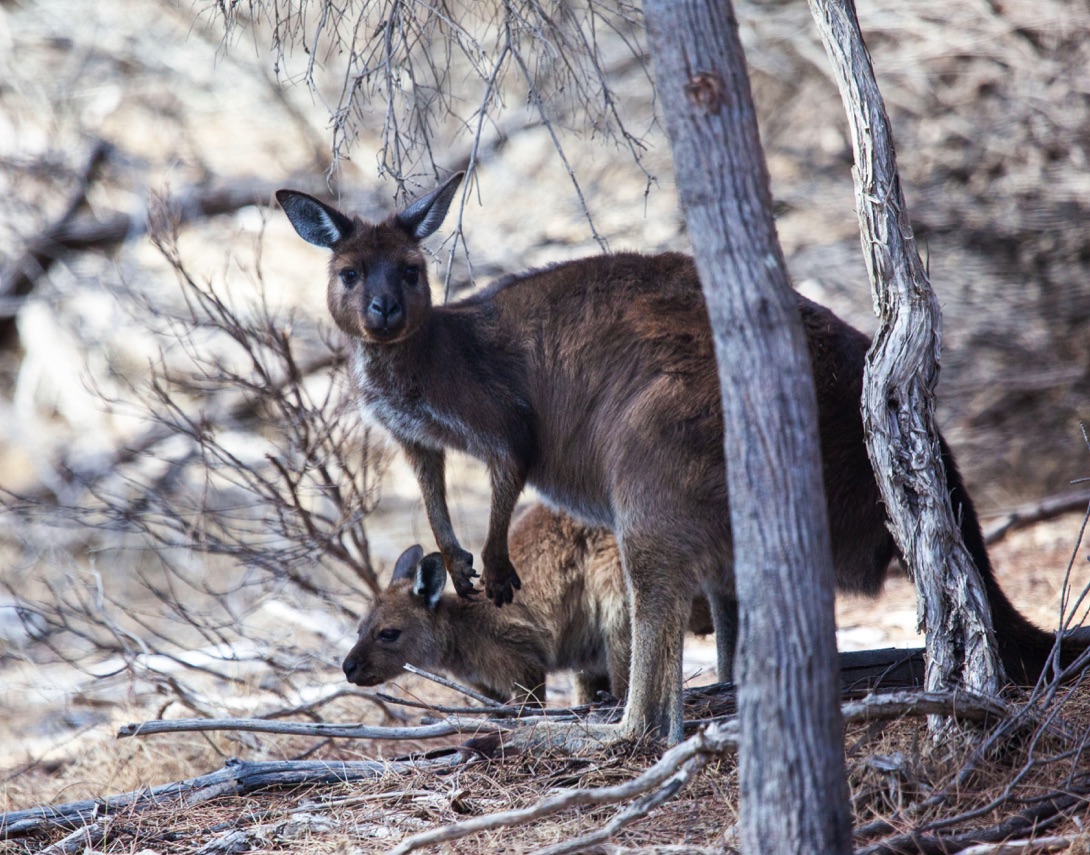
This female seal lion lifts its fin to allow her youngone to nurse.
A Roo and her Joey
Bennett's Wallaby
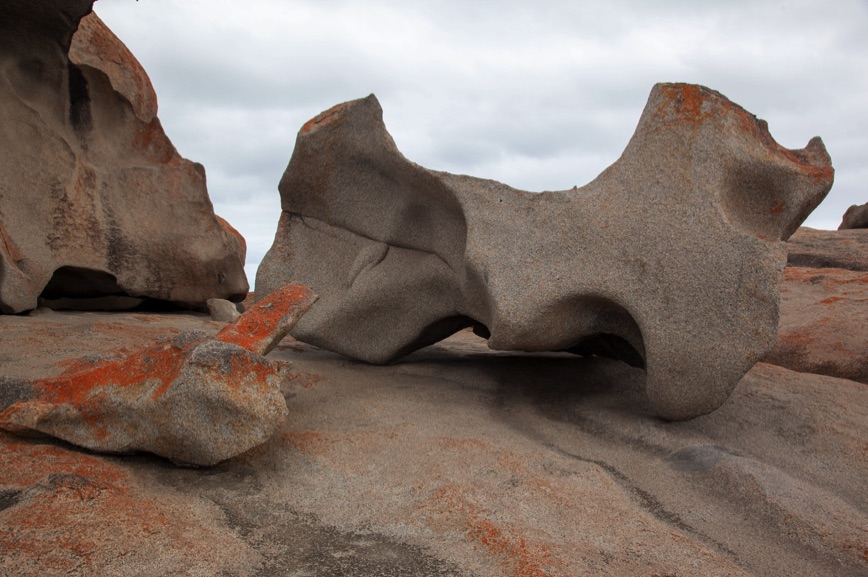
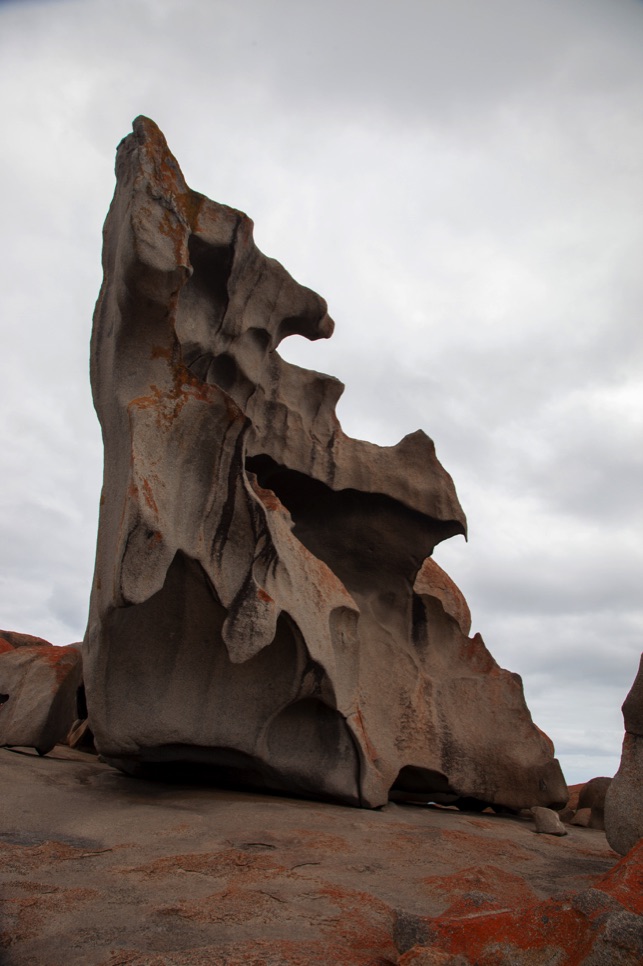
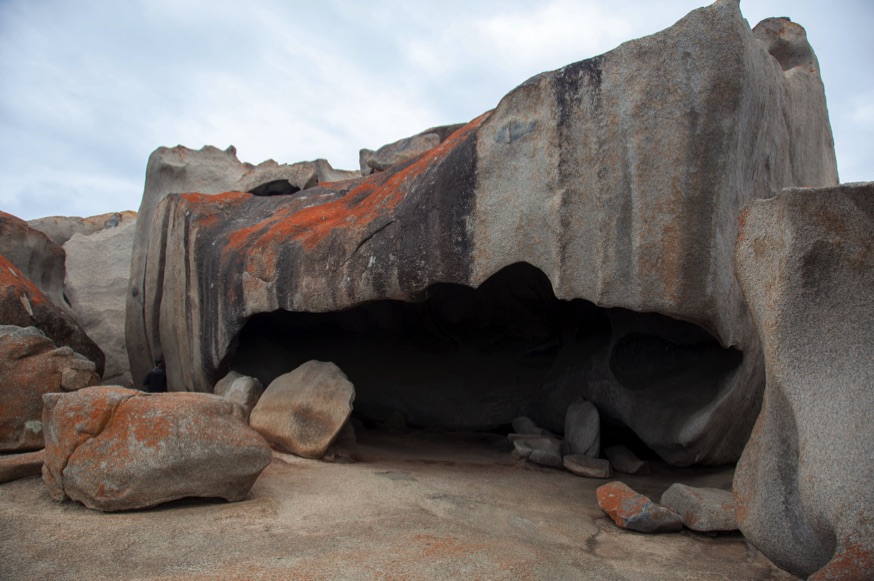
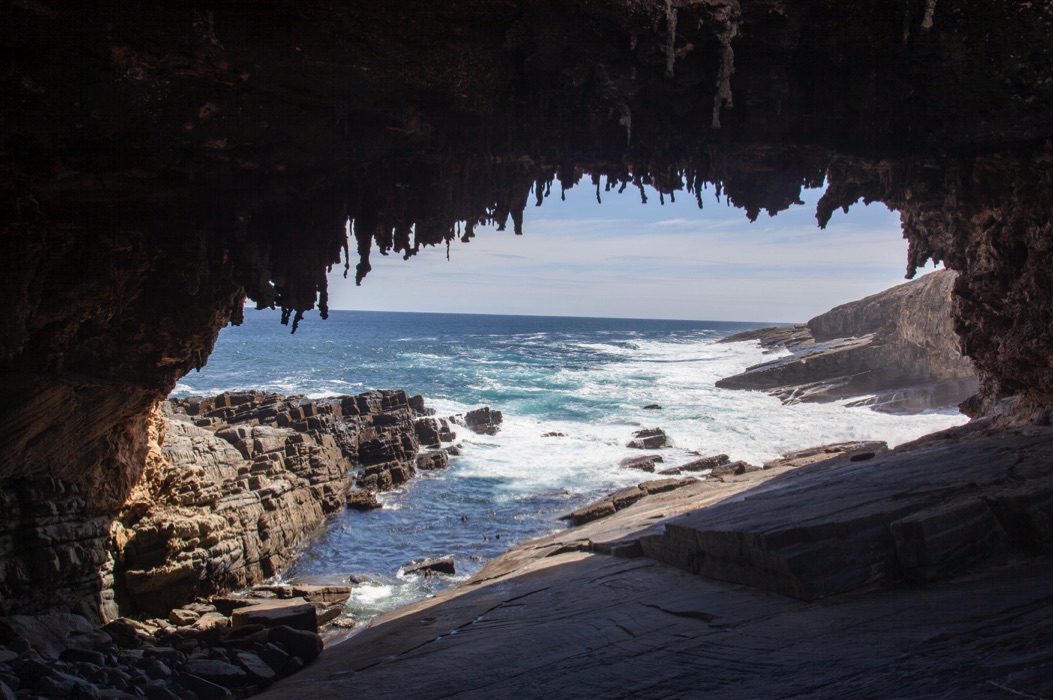
Admiral's Arch
Kangaroo Island
Cheryl is holding a good sized boomerang. Early Australians used this to bring down Emu, Kangaroo or Wallaby. They could break the neck of an Emu or take the leg out of the Roo. These were common sources of meat. The large ones weren't made to return. They used smaller ones for birds.
As a survival tactic the skink can drop its tail when chased by a predator.
The predator will often focus on the wriggling tail while the skink escapes.
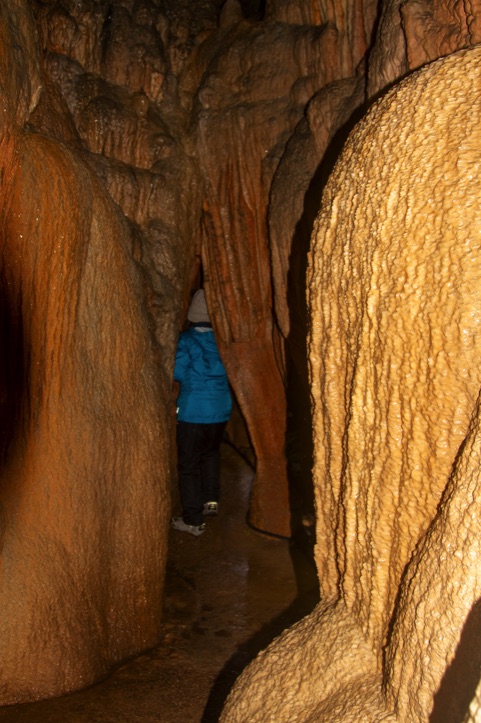


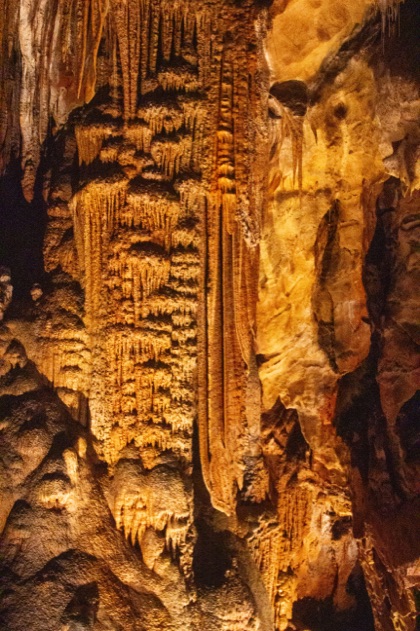

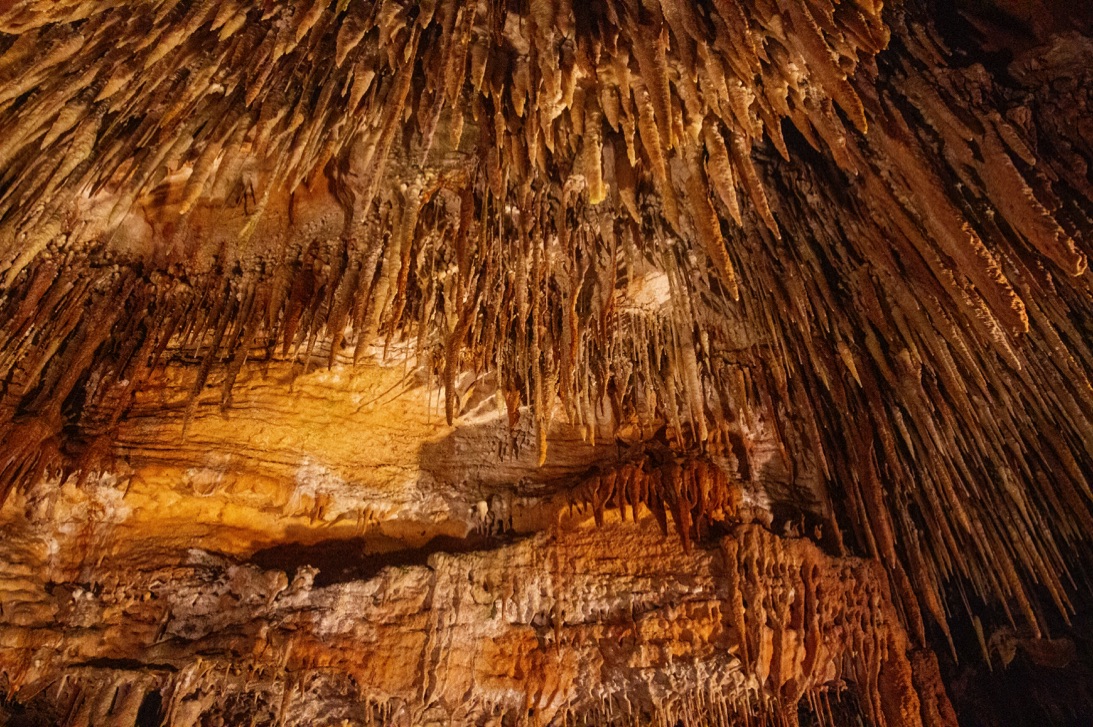
King Solomon’s Cave is in Mole Creek Karst National Park, a Tasmanian Wilderness World Heritage Area
Dramatic limstone formations of
stalactites and stalagmites with
sparkling calcite decorating the chambers.
This formation looked a lot like bacon stripss.
King Solomon's was found in 1906 by two men chasing an unlucky wallaby who fell down a 40 foot drop into a cavern.
With ropes and then ladders, this was the entrance to the caverns until 1928 when a cave entrance was completed